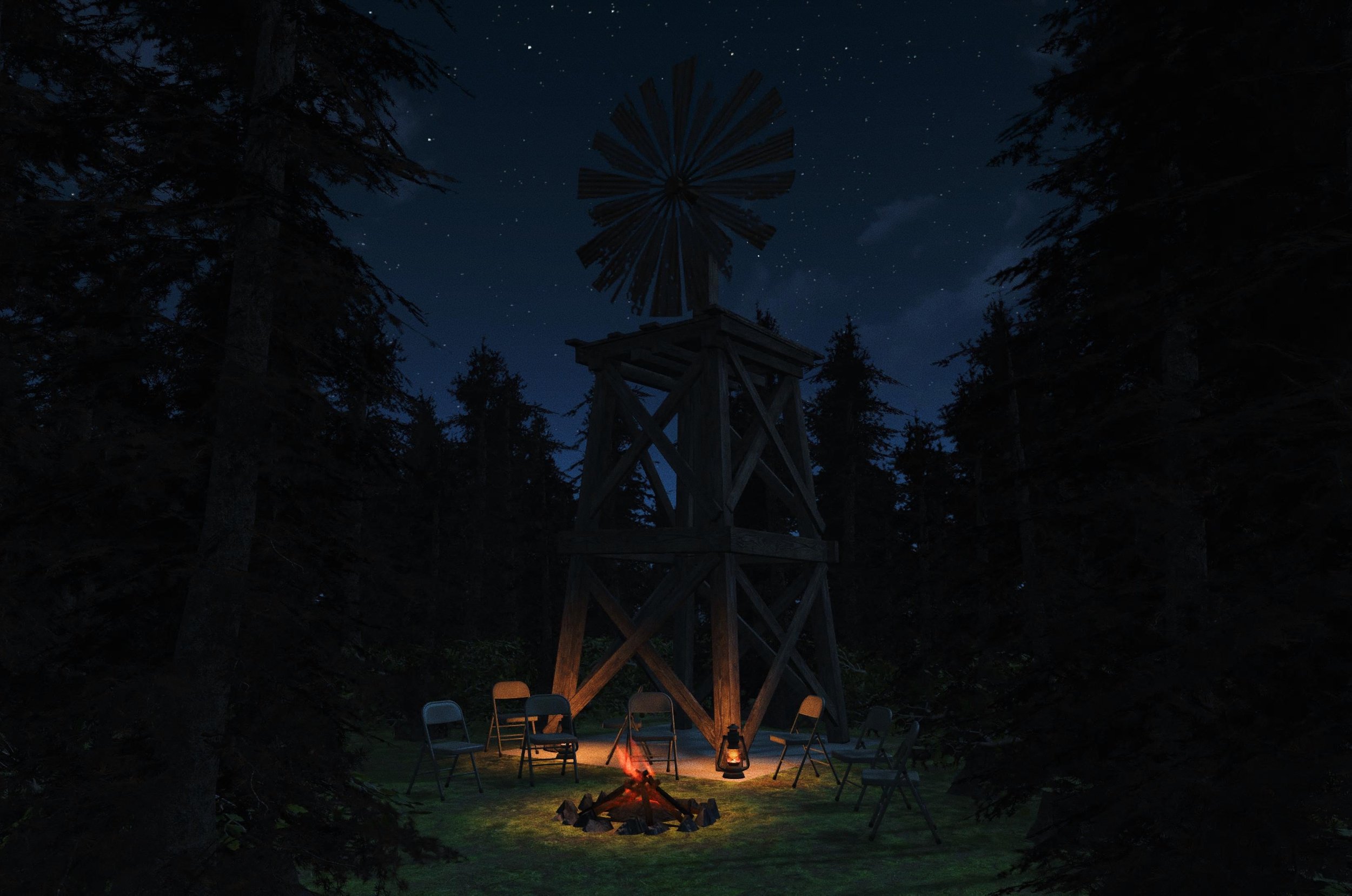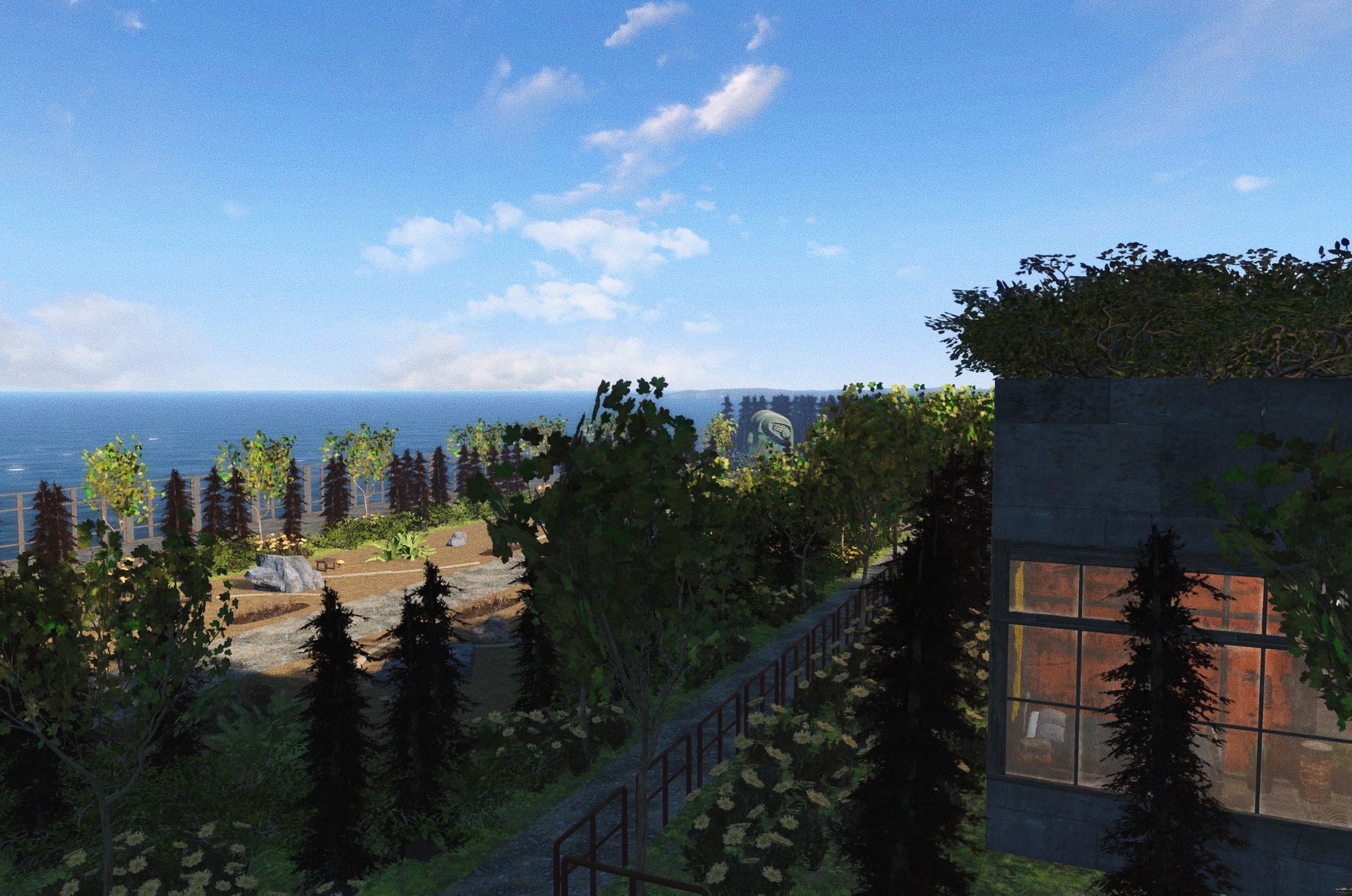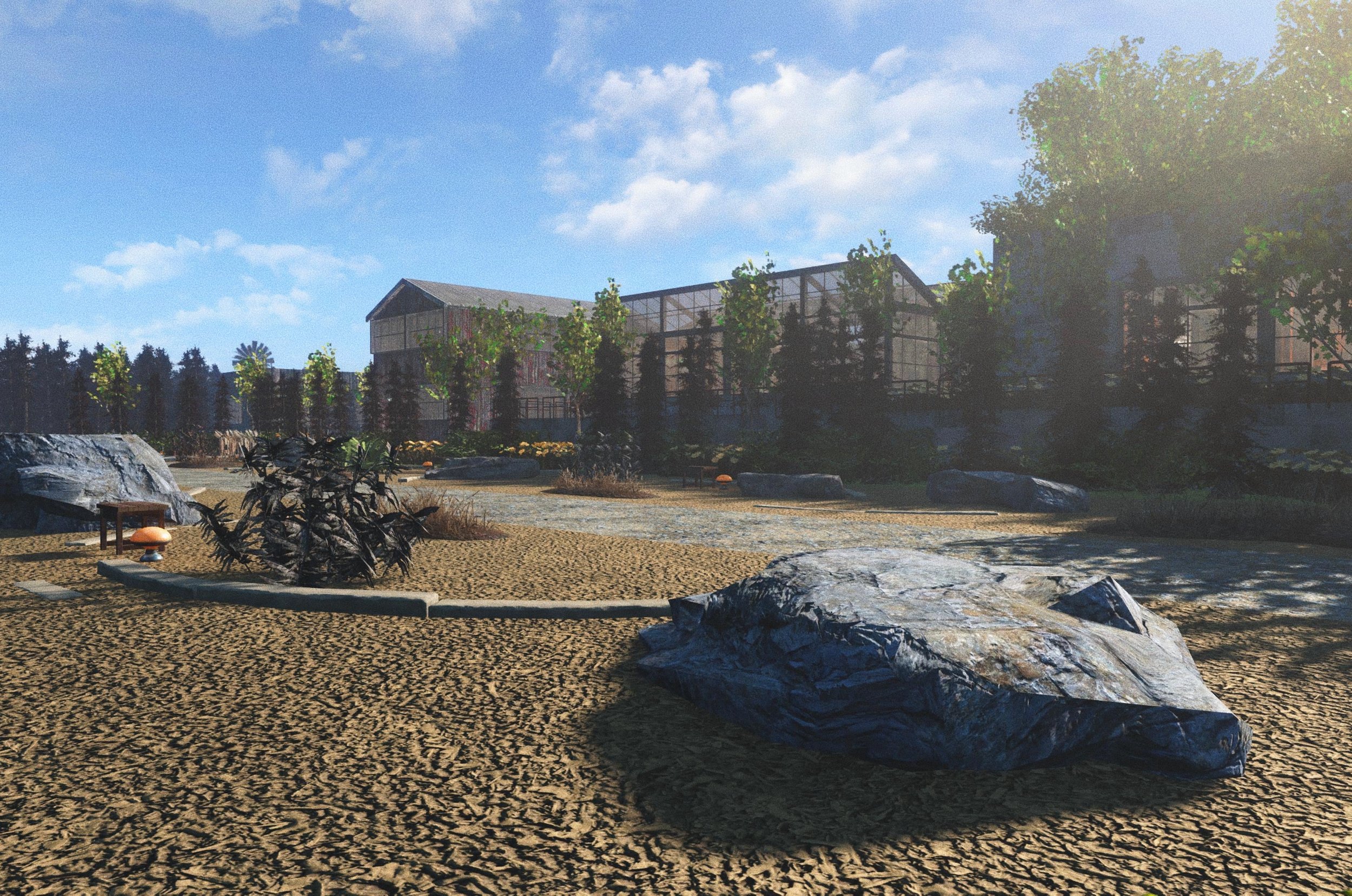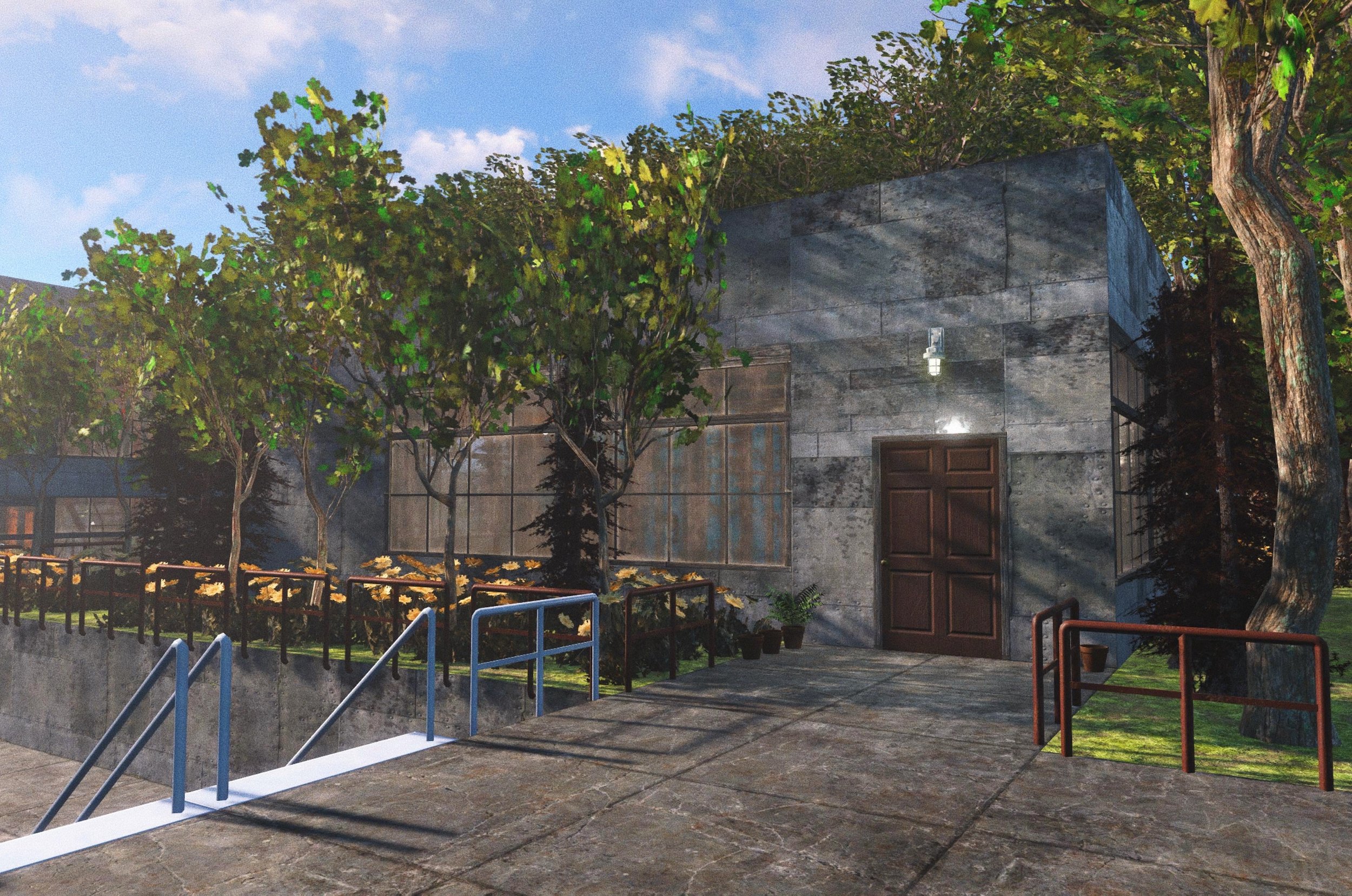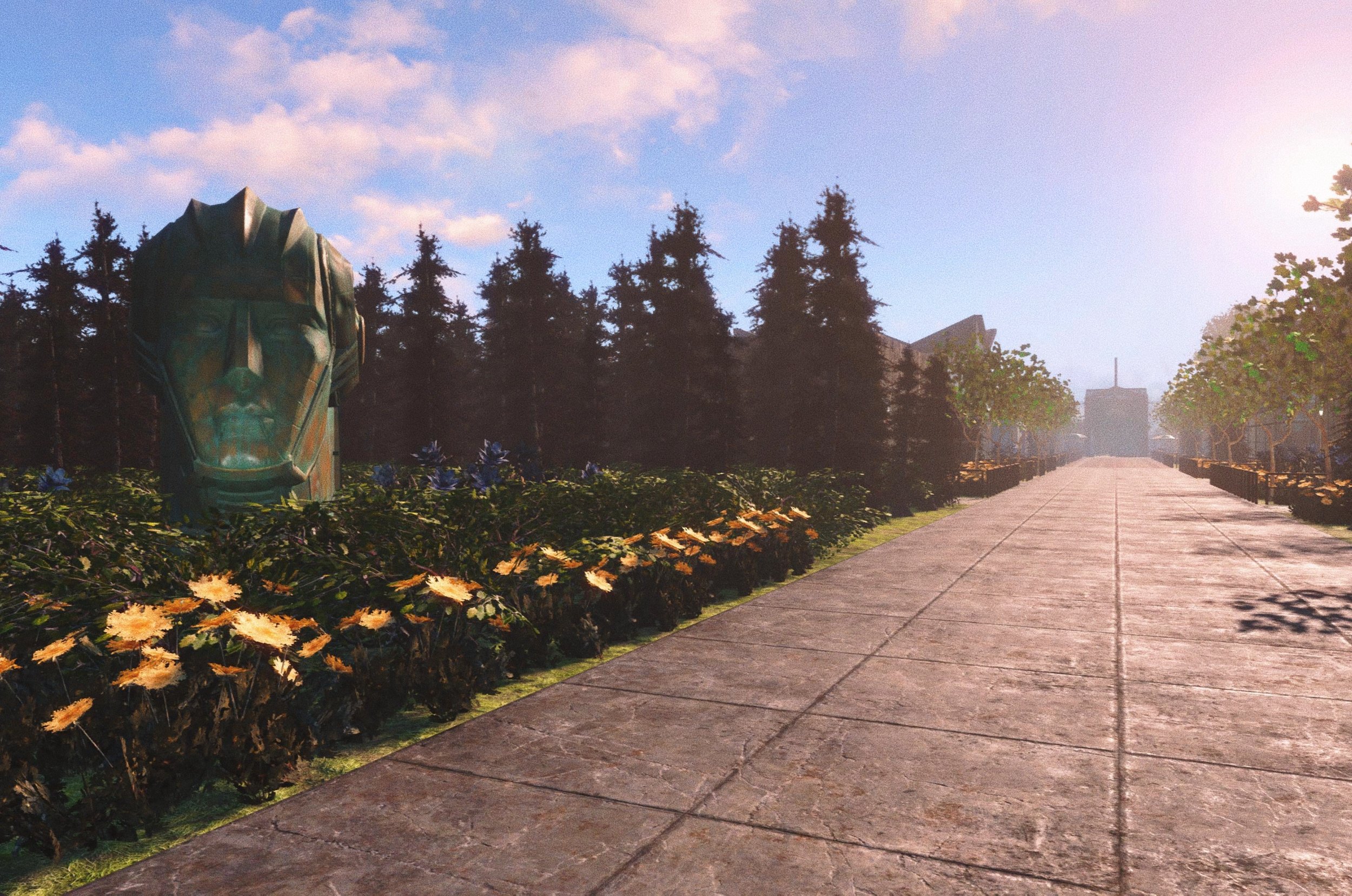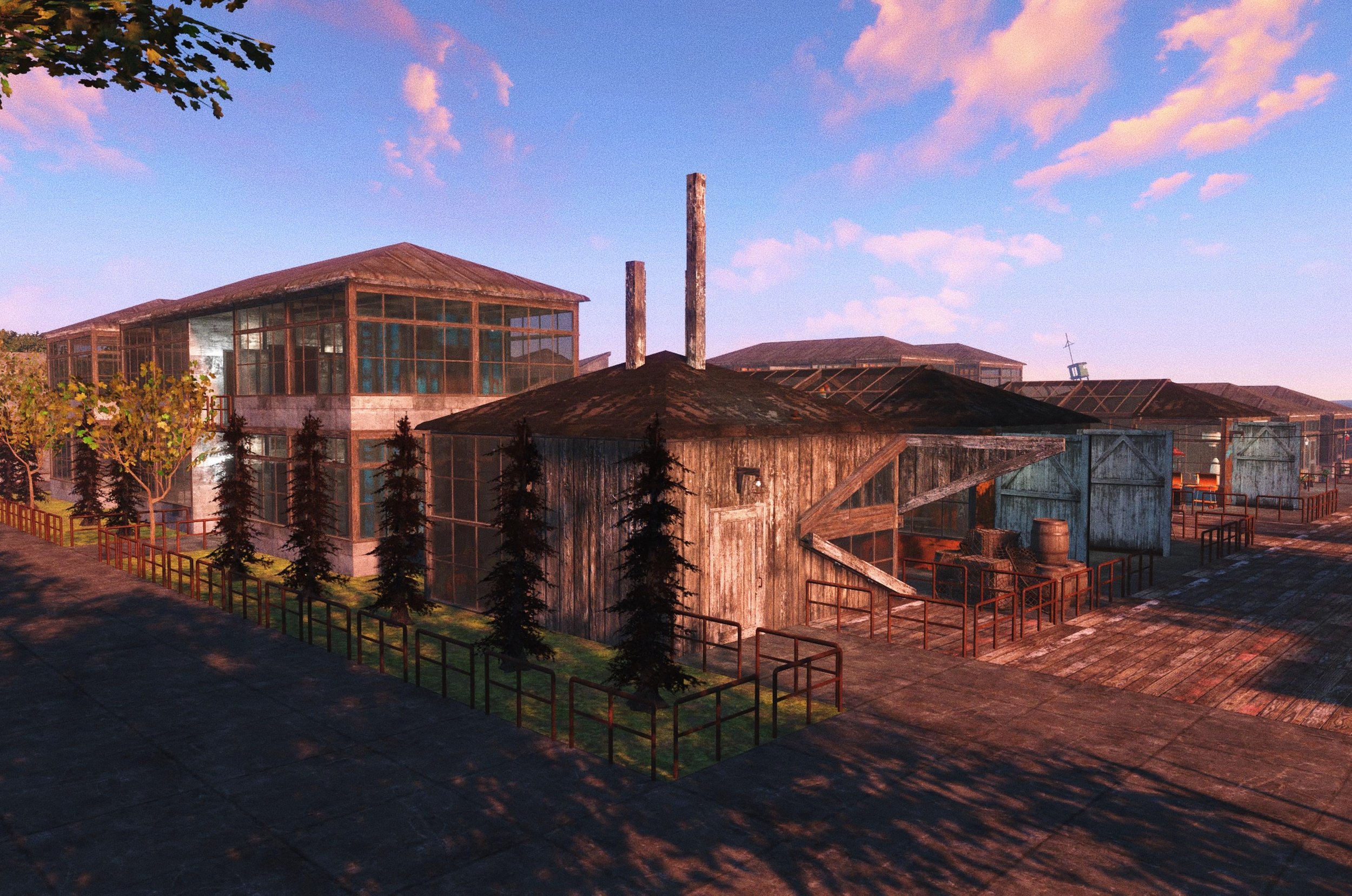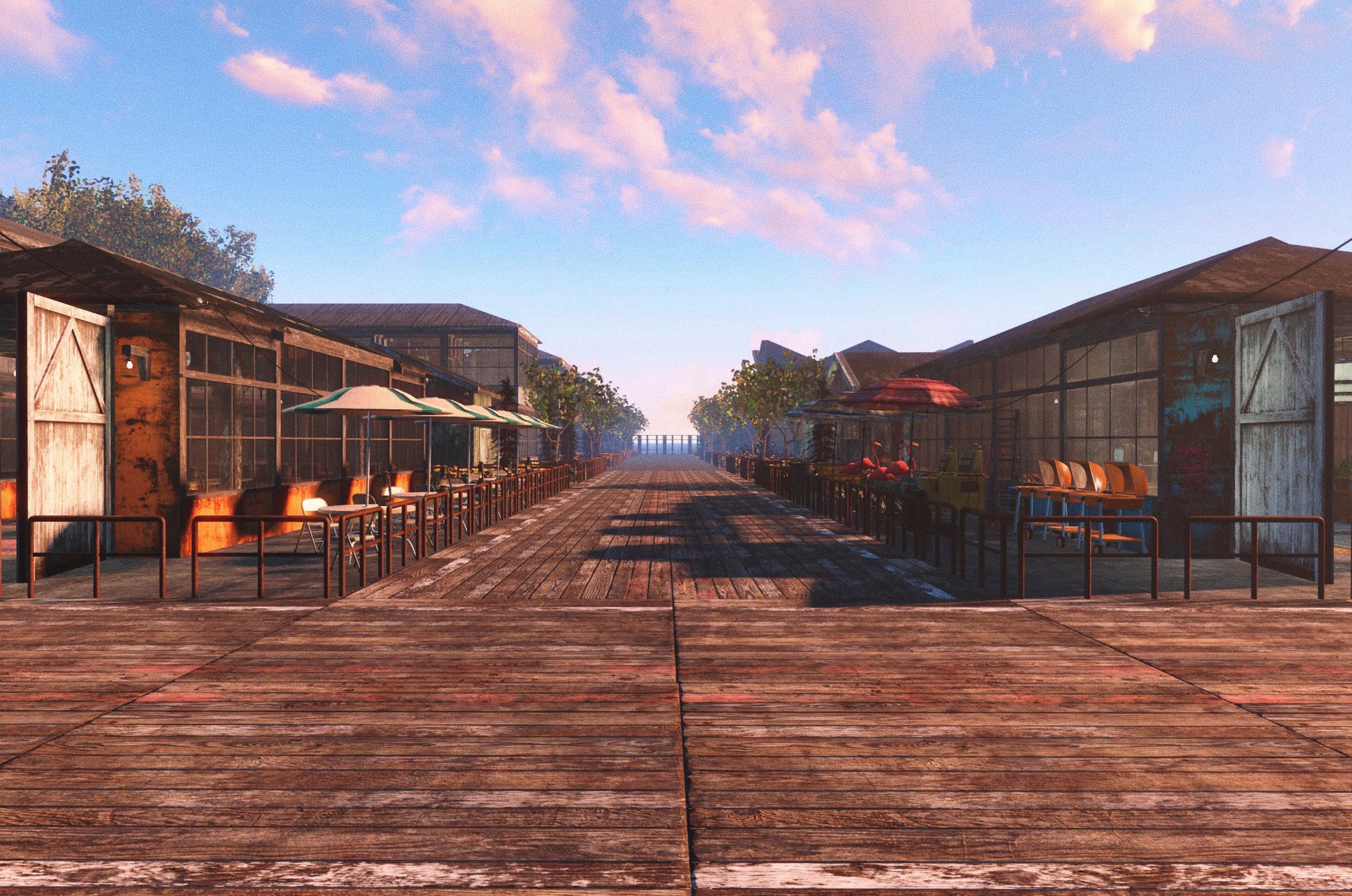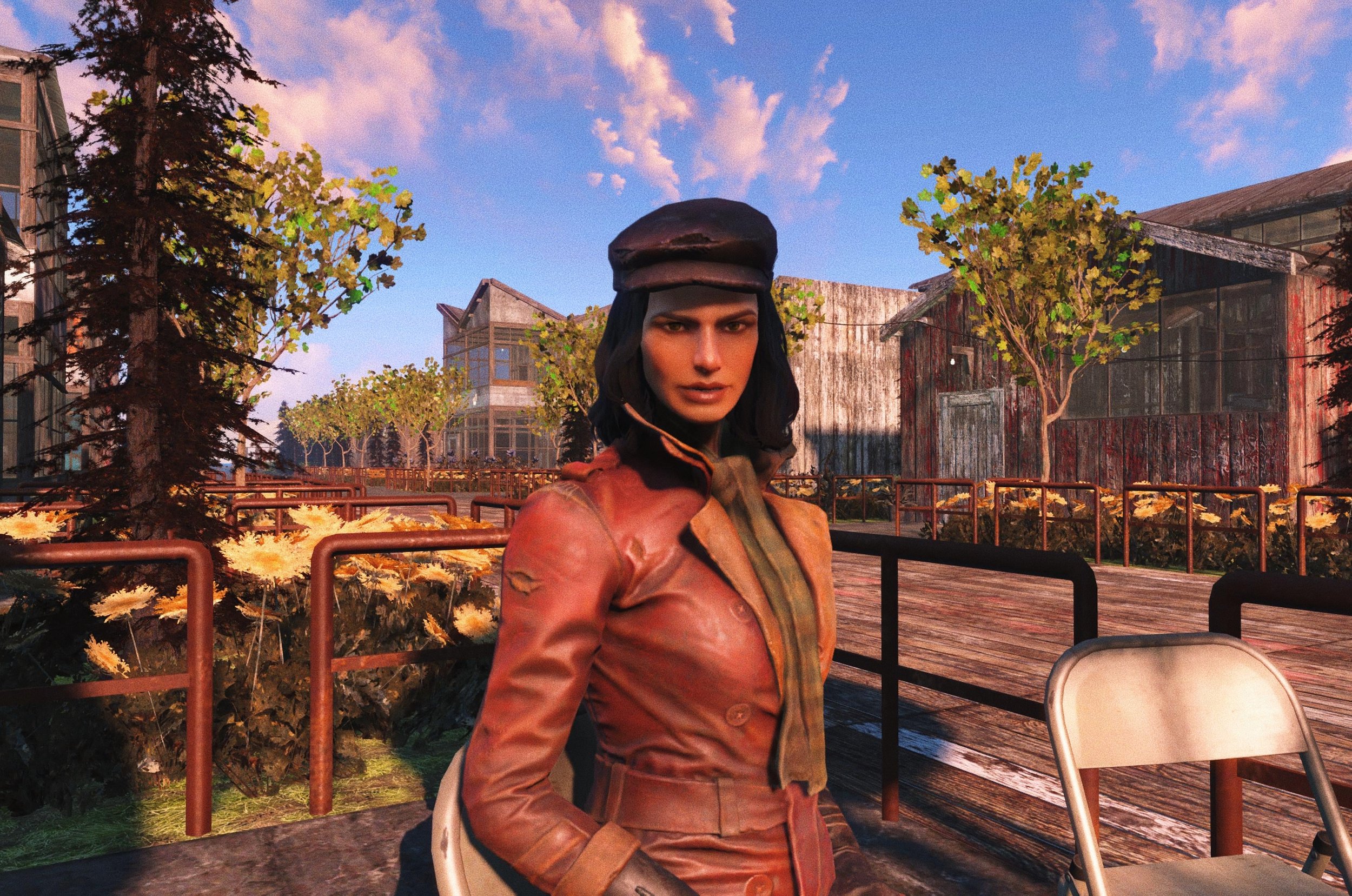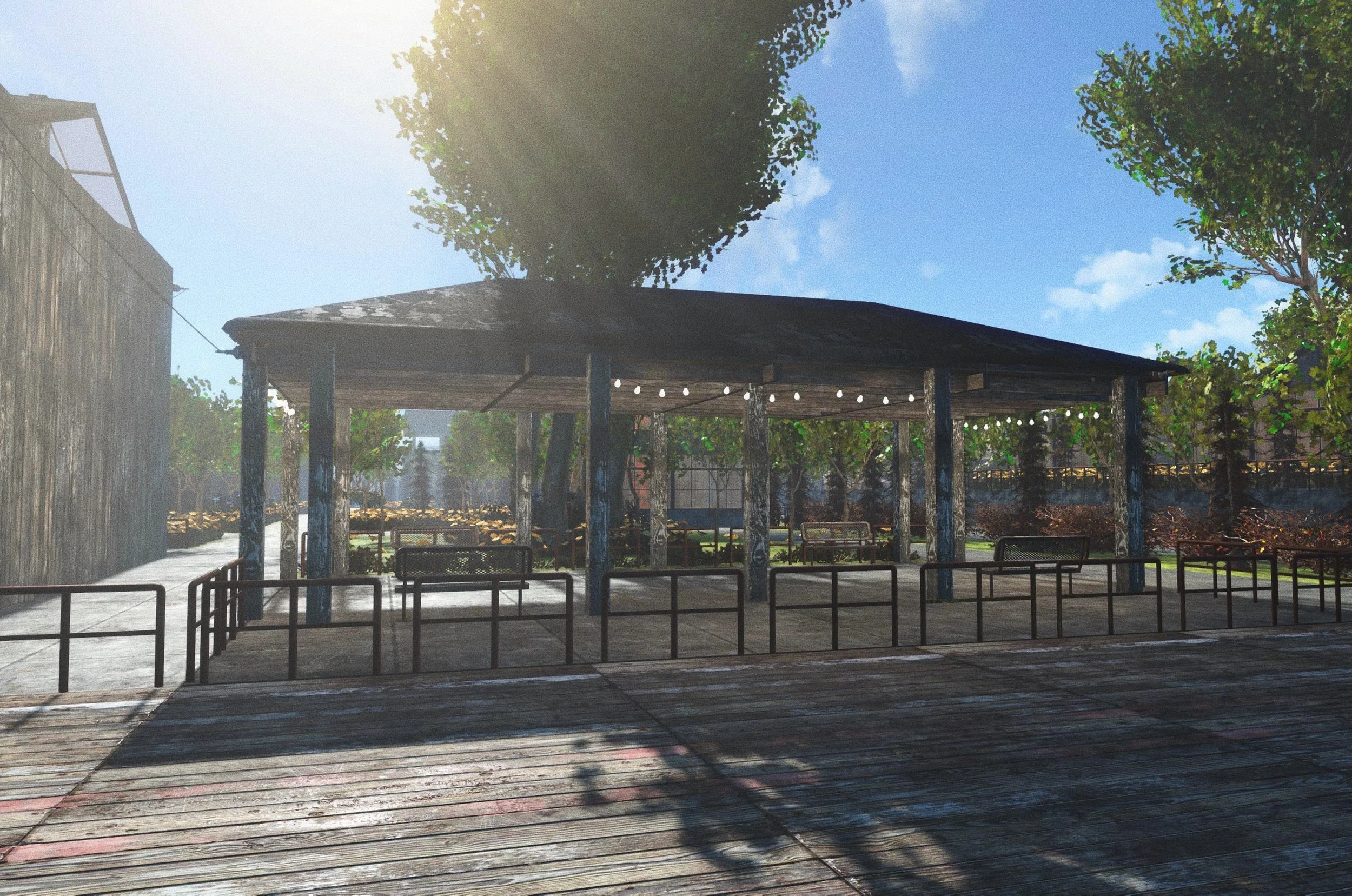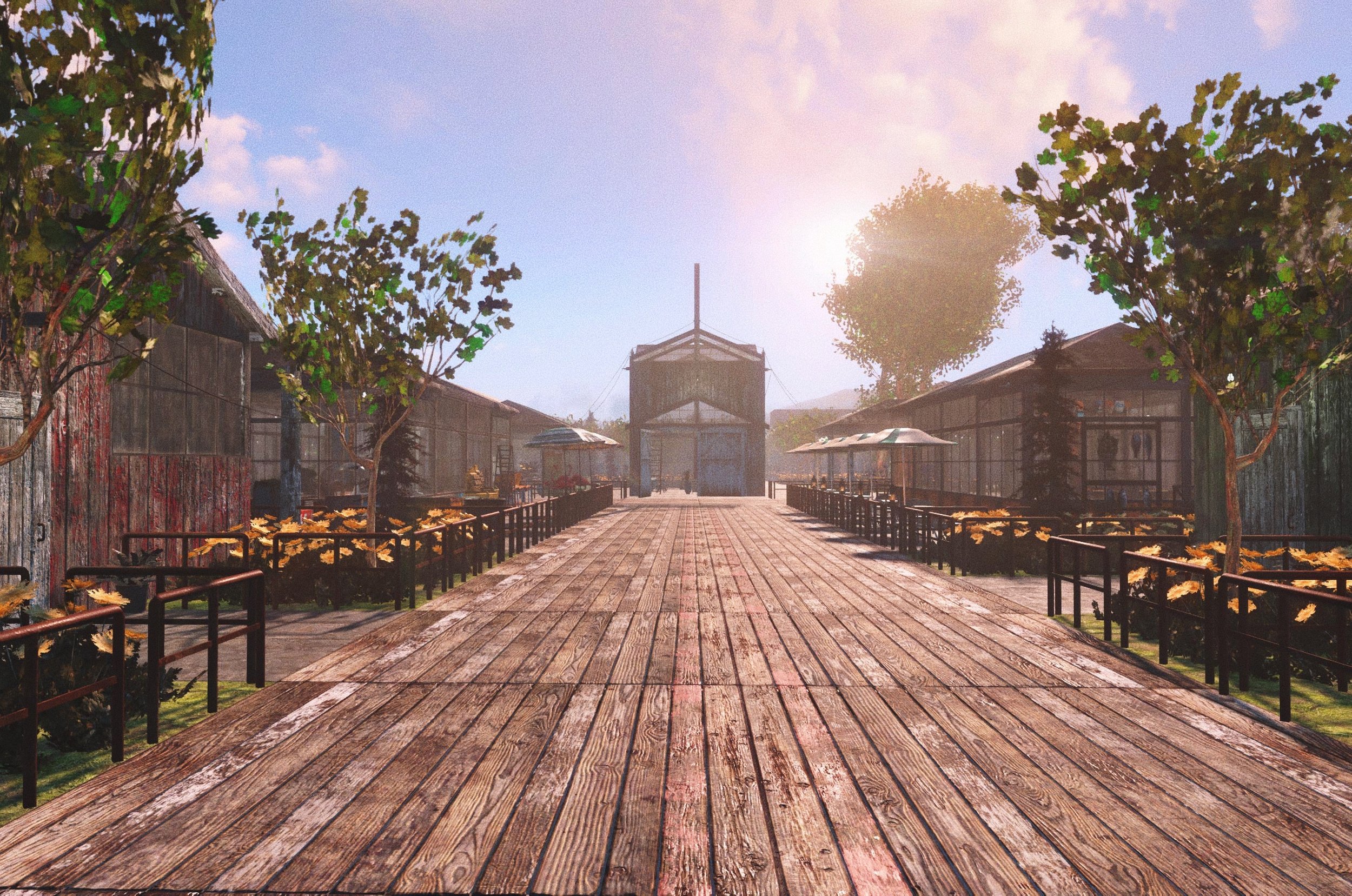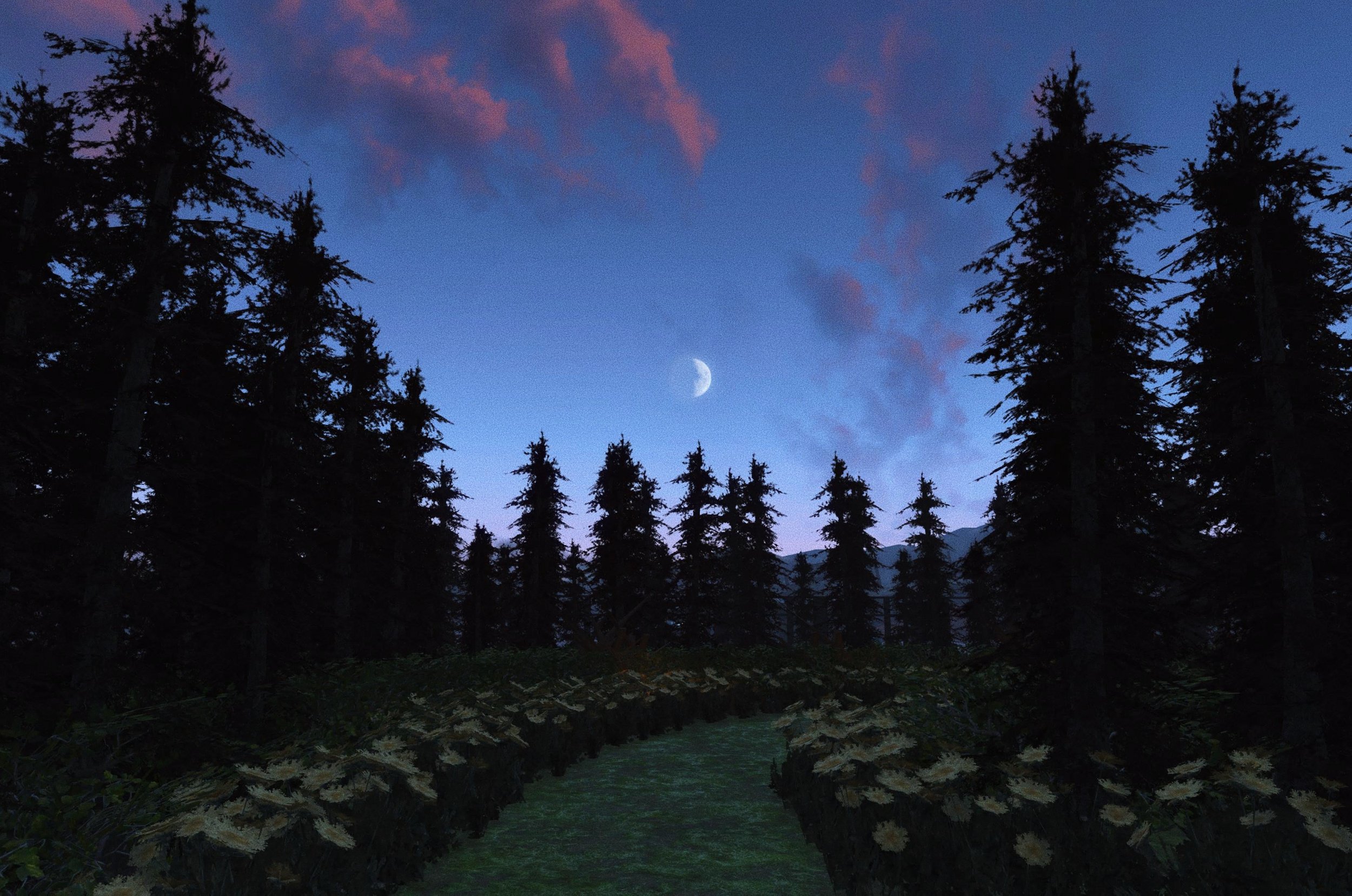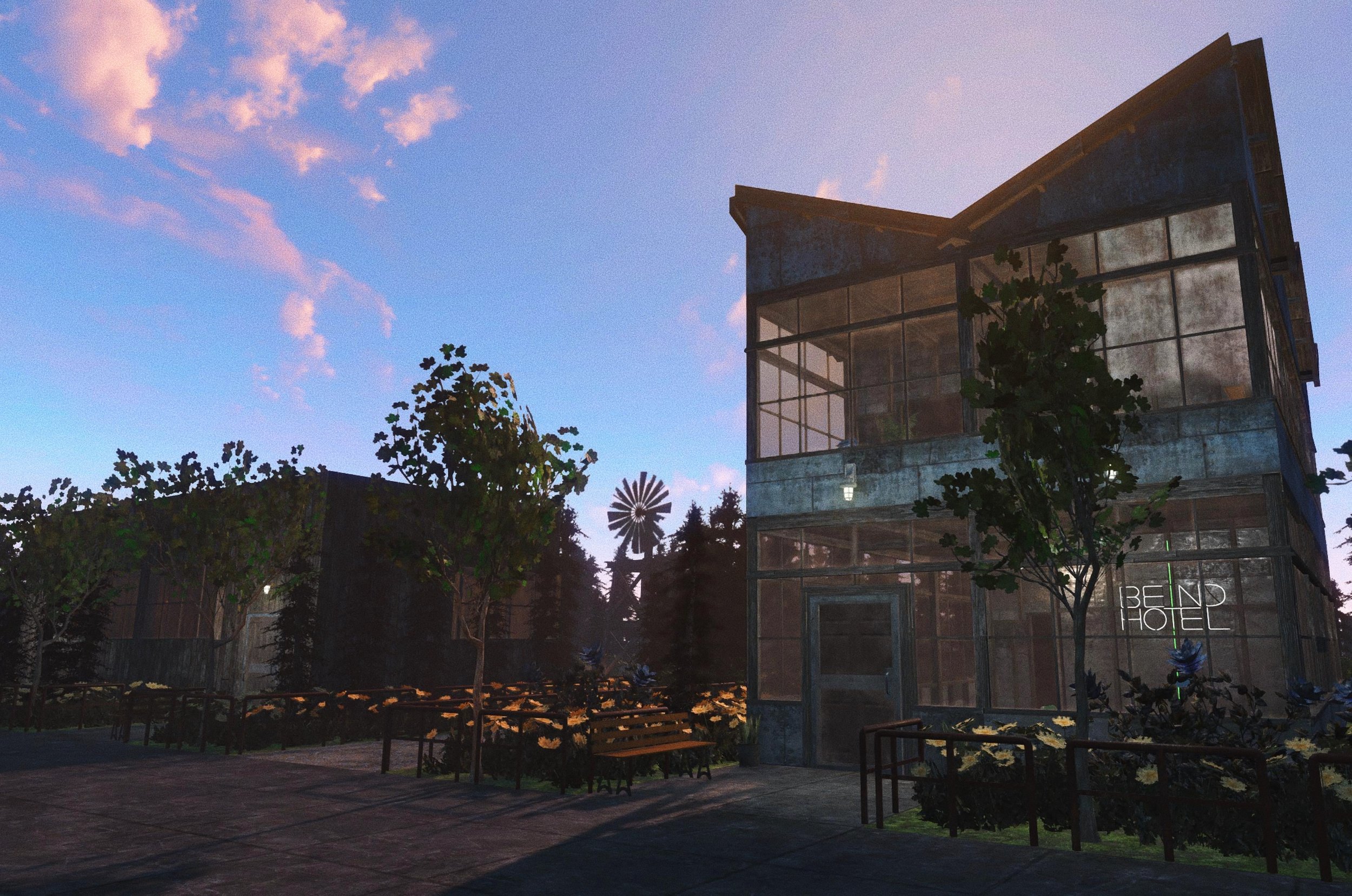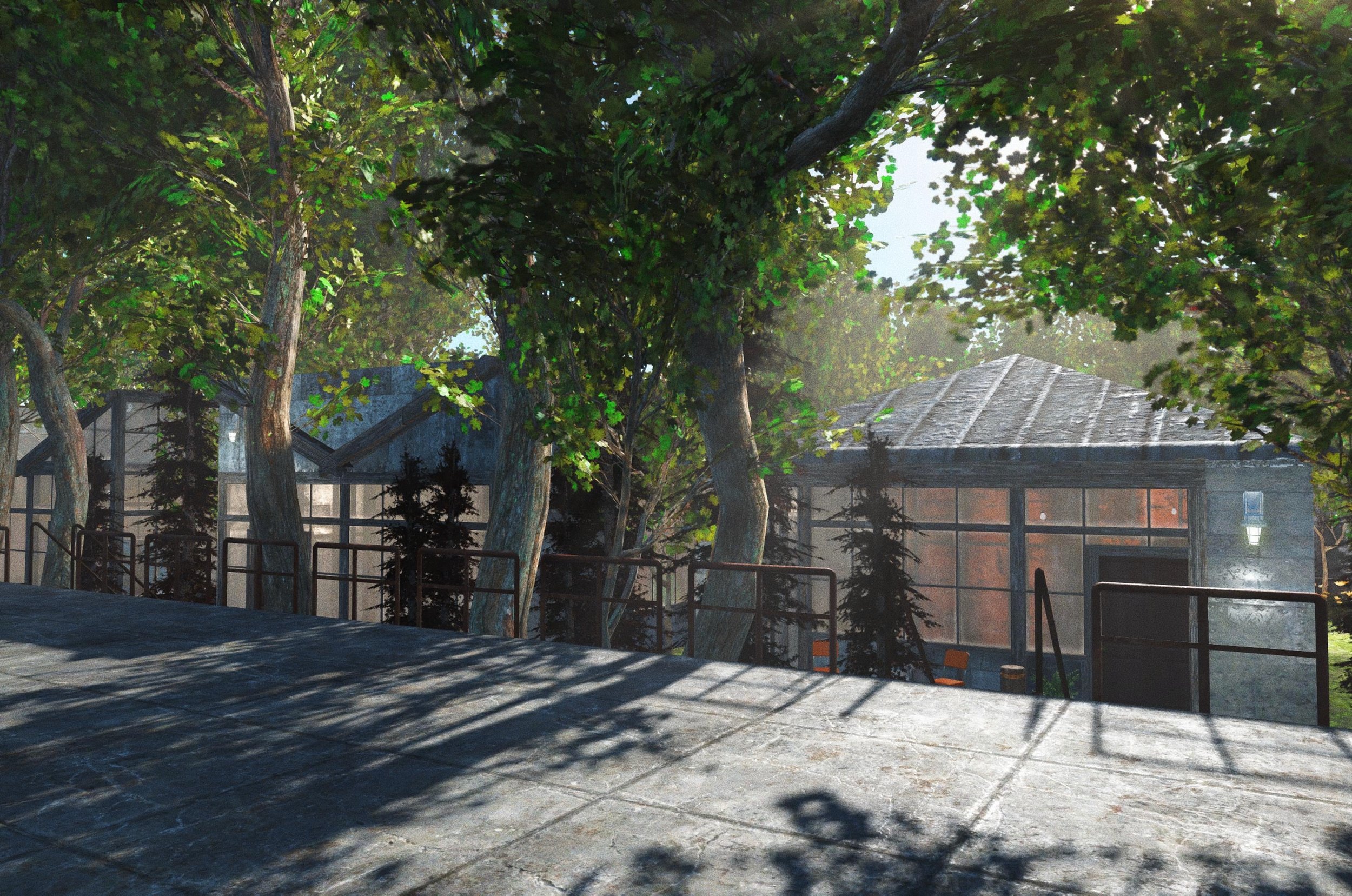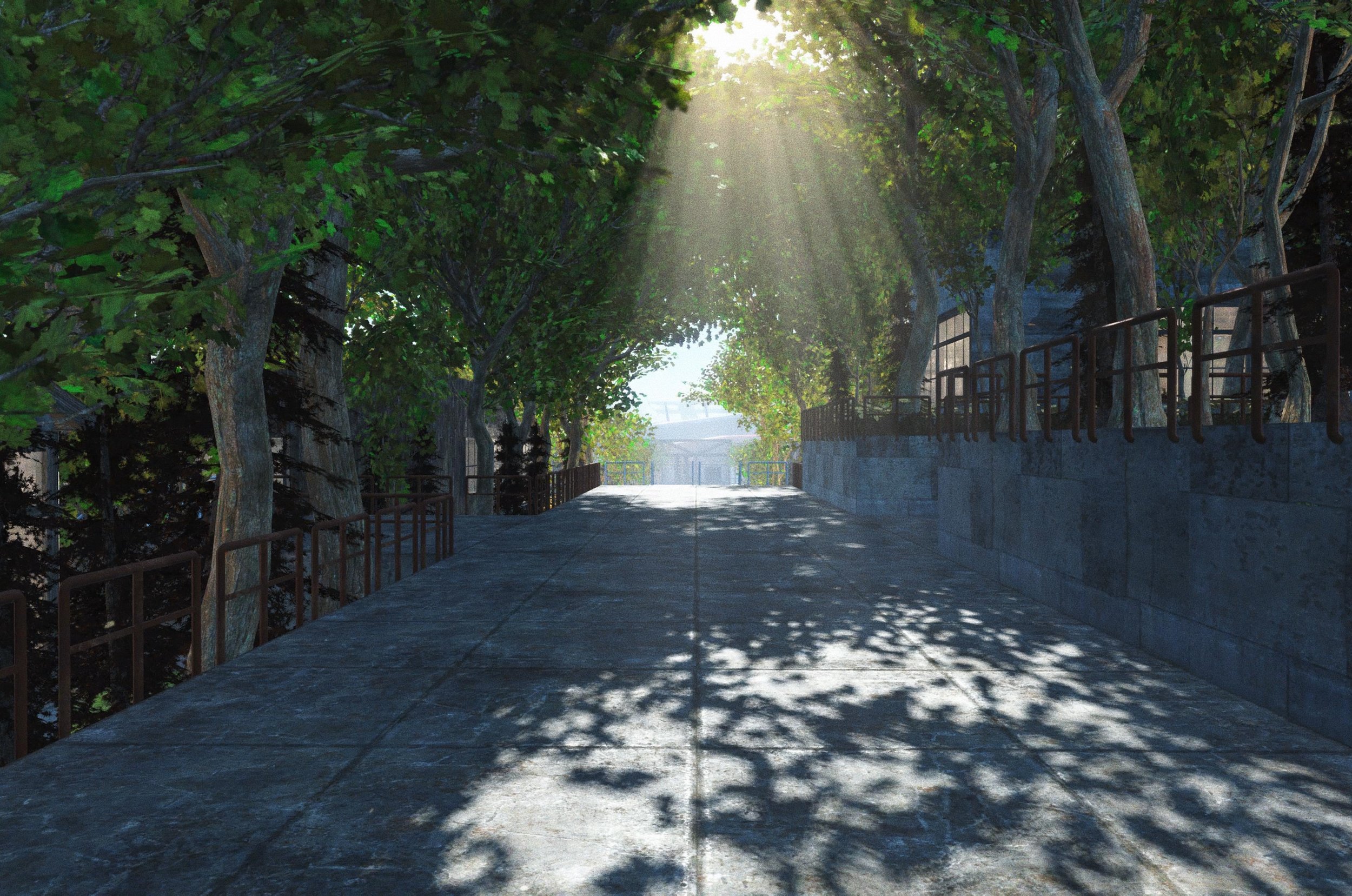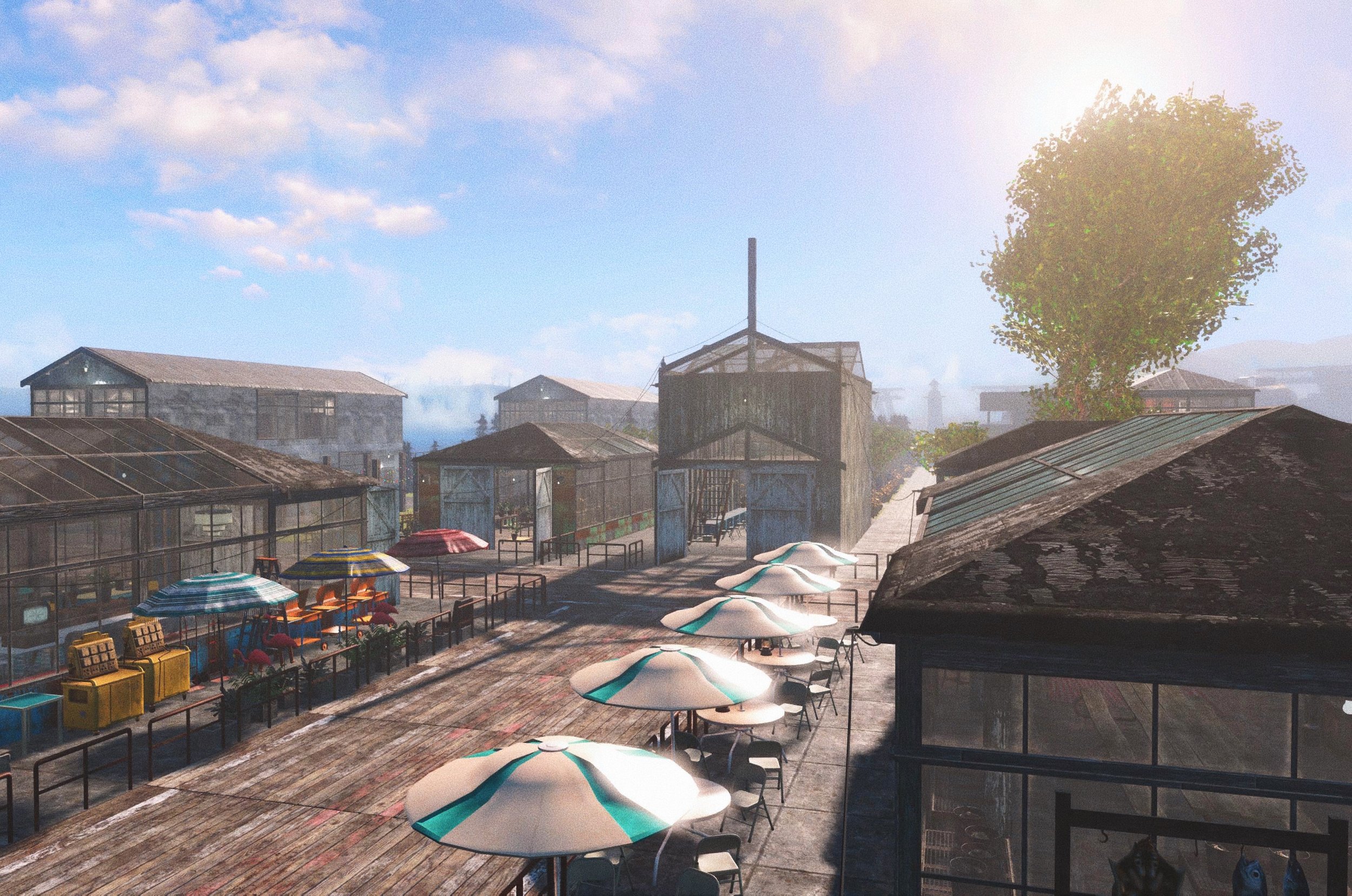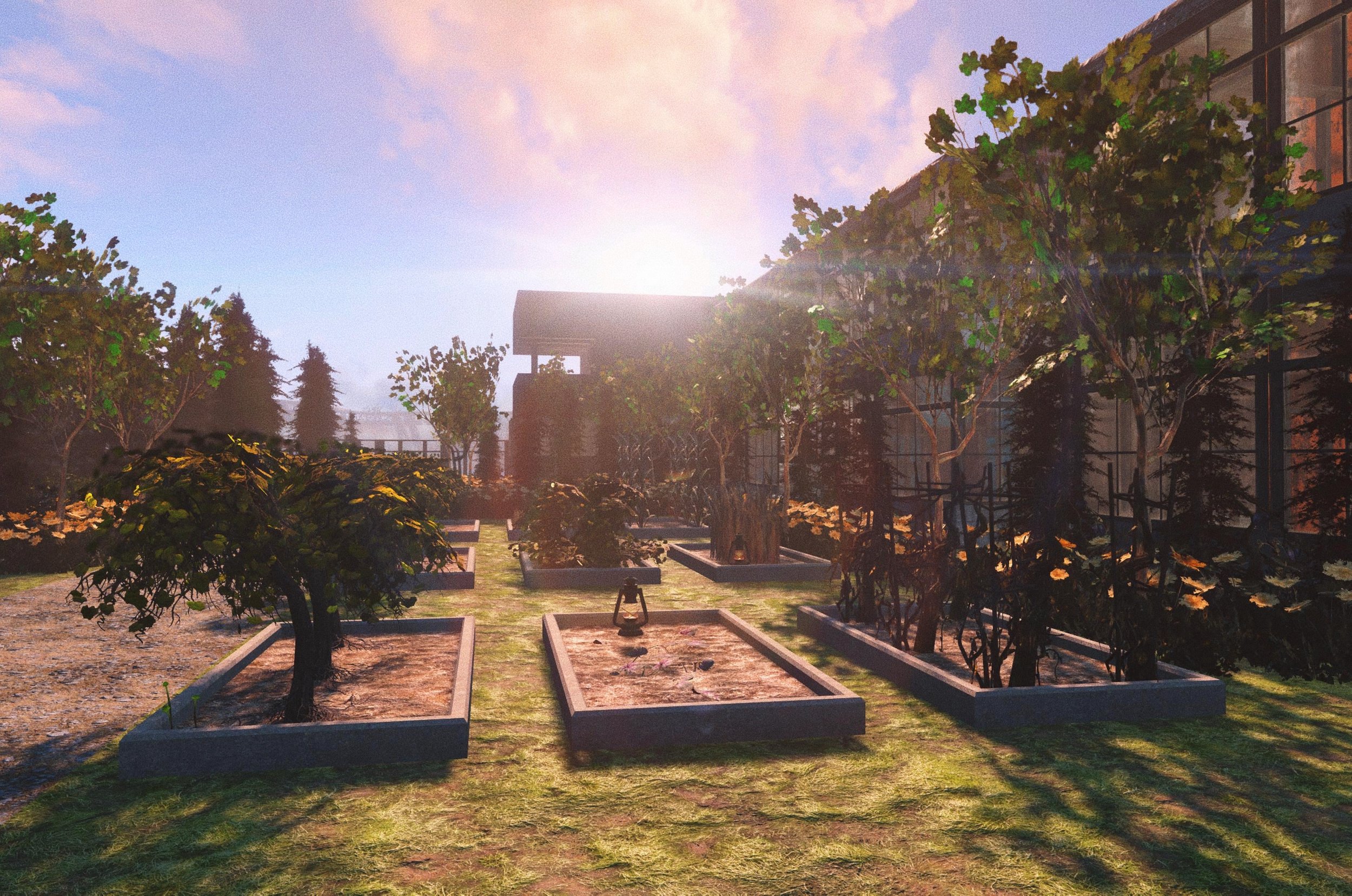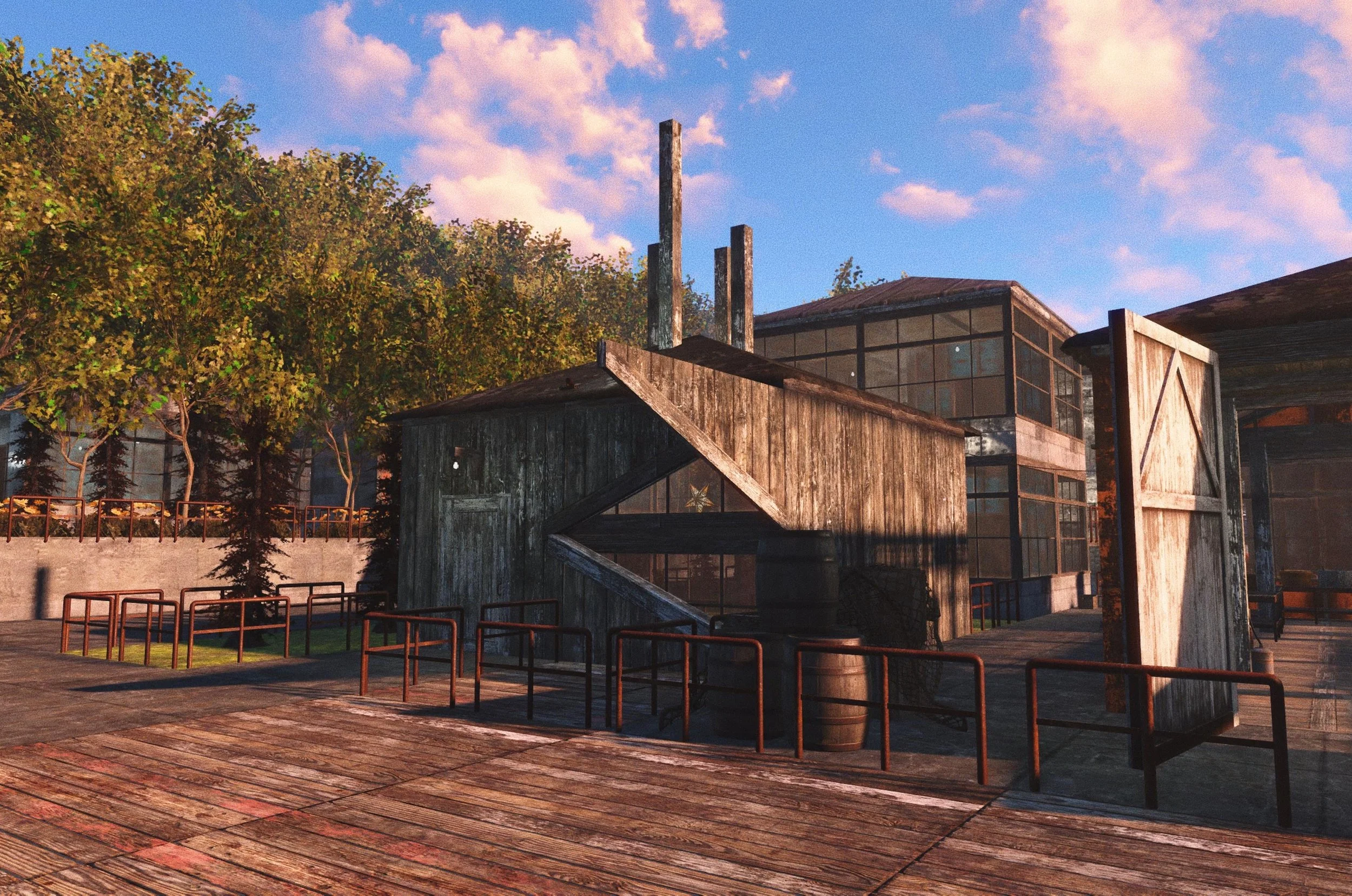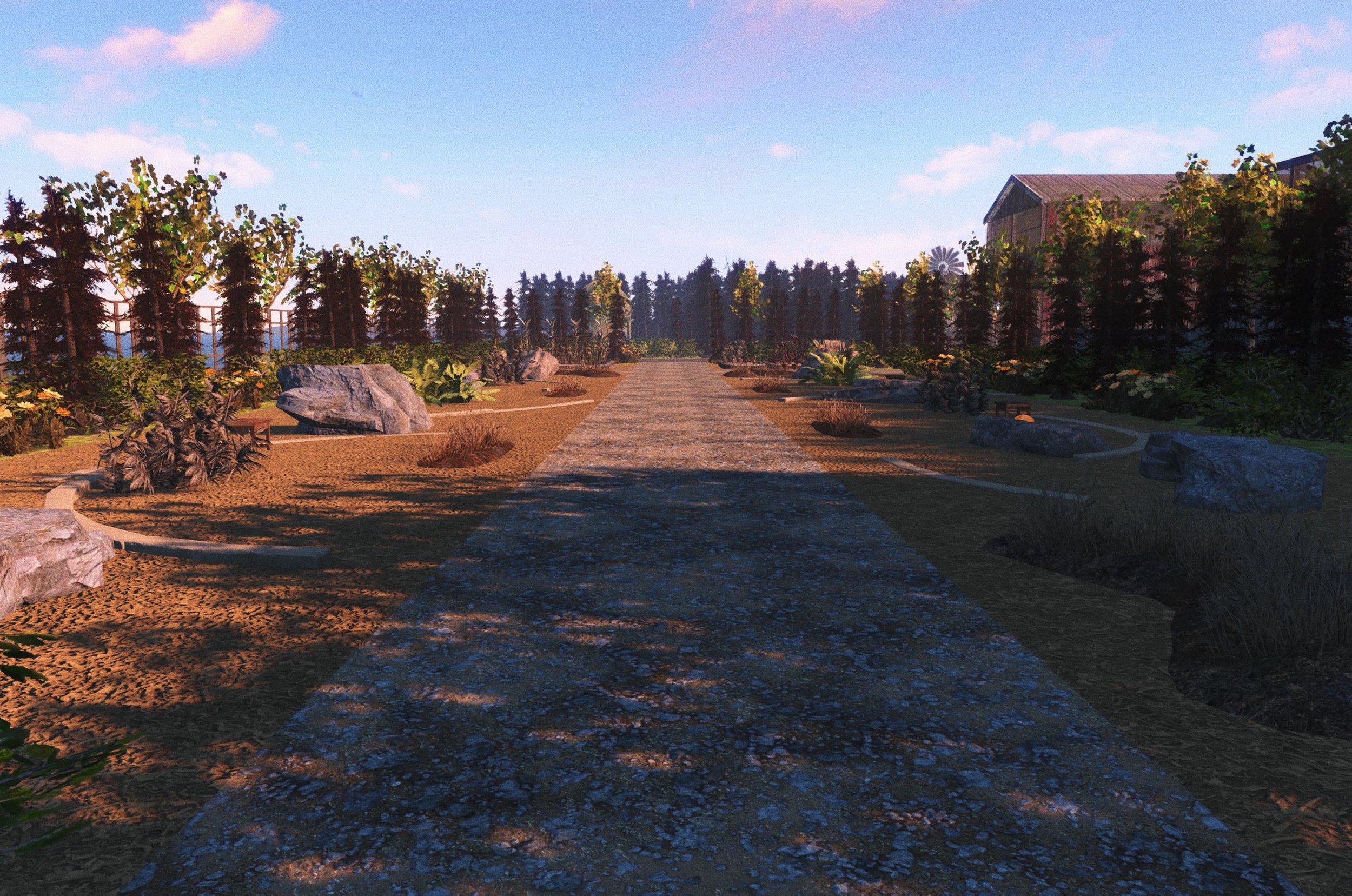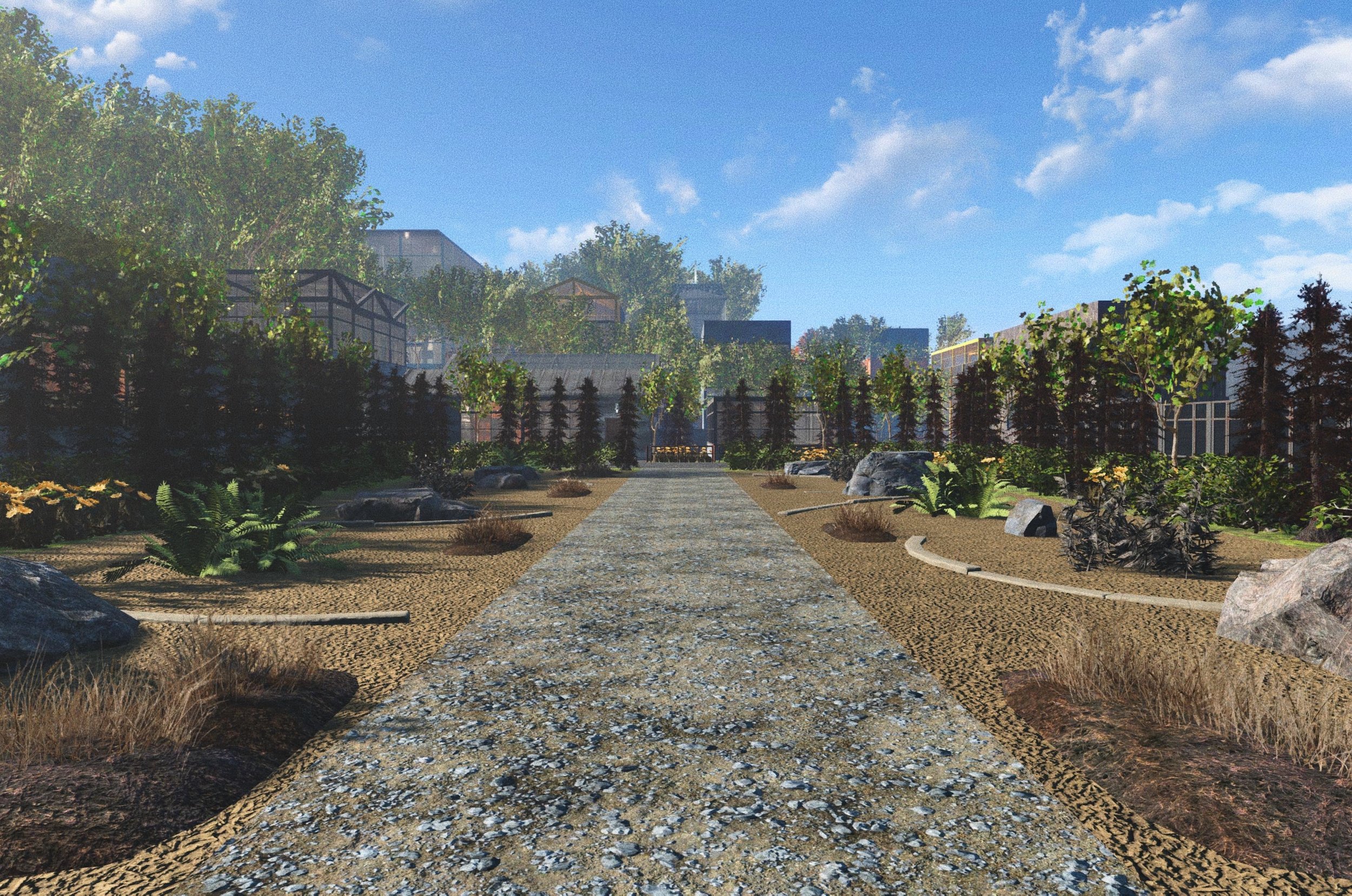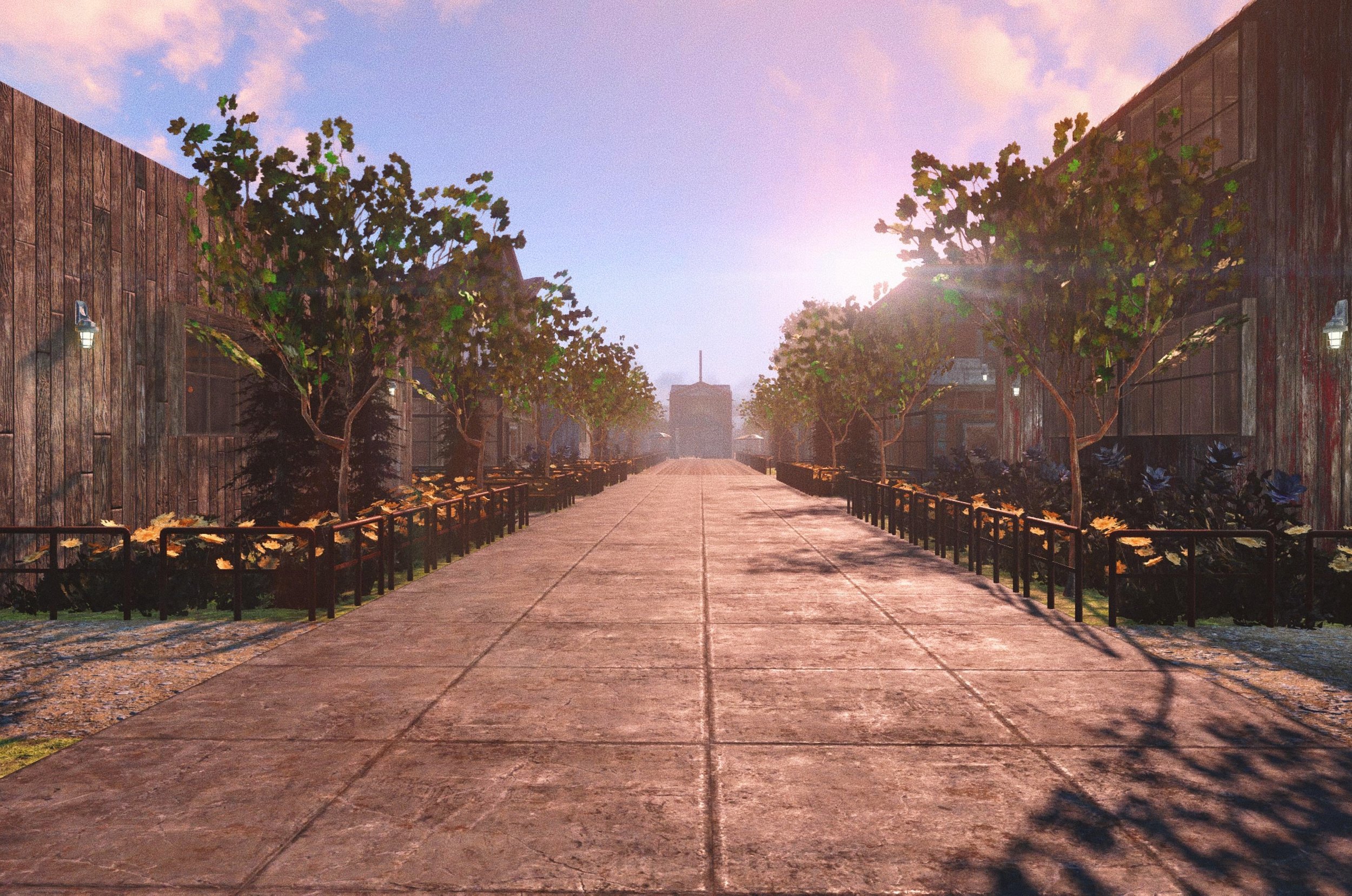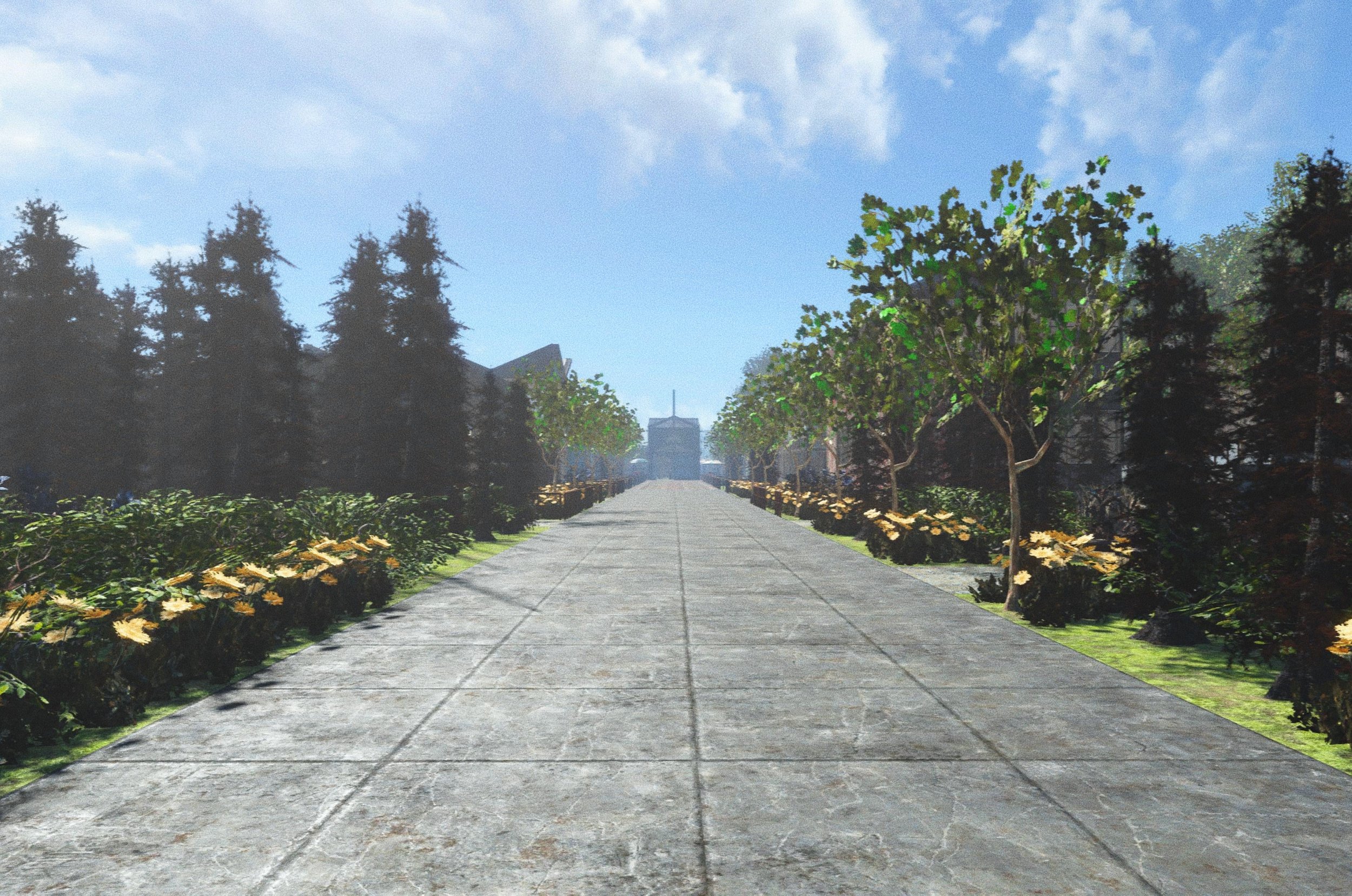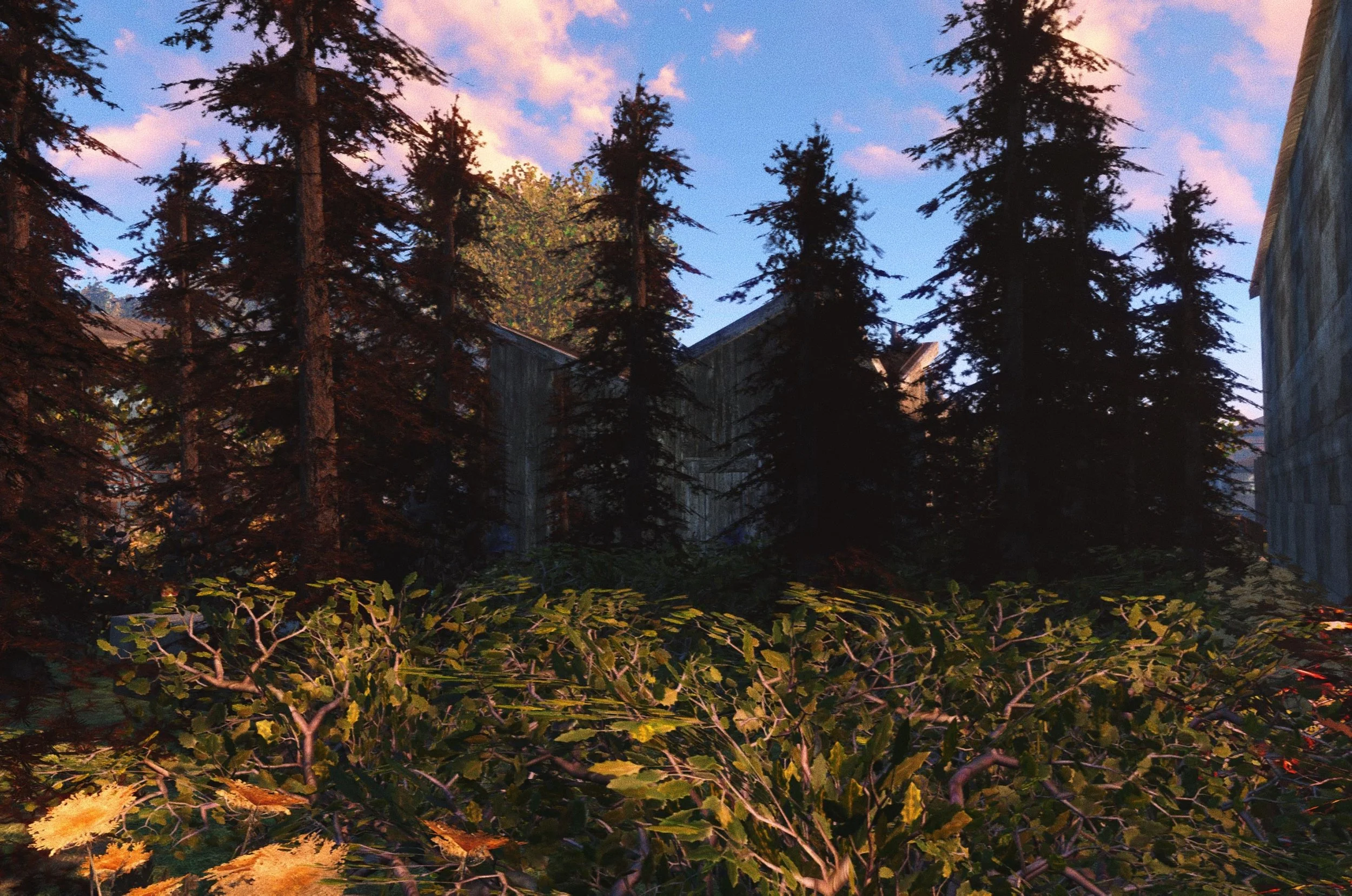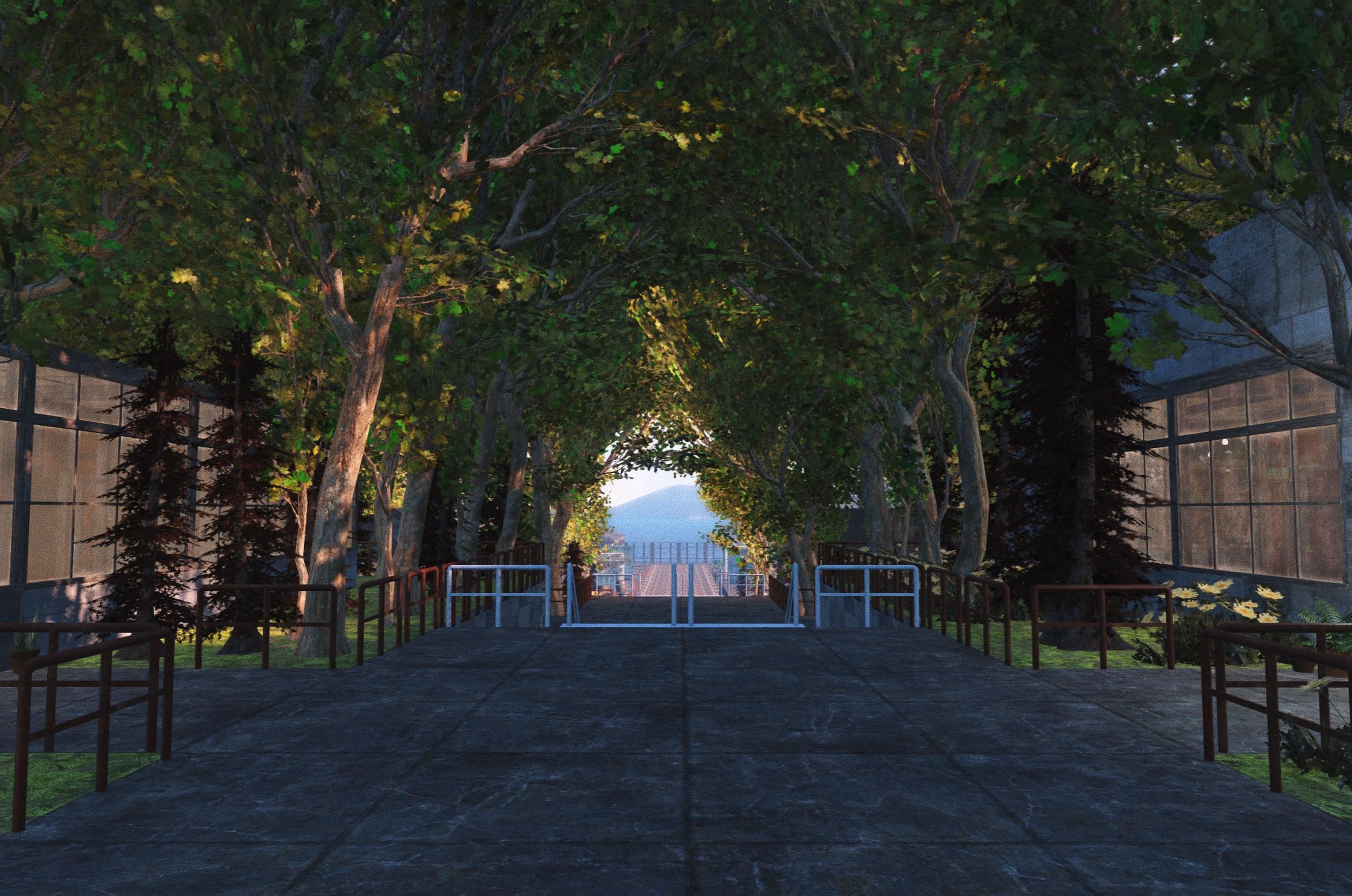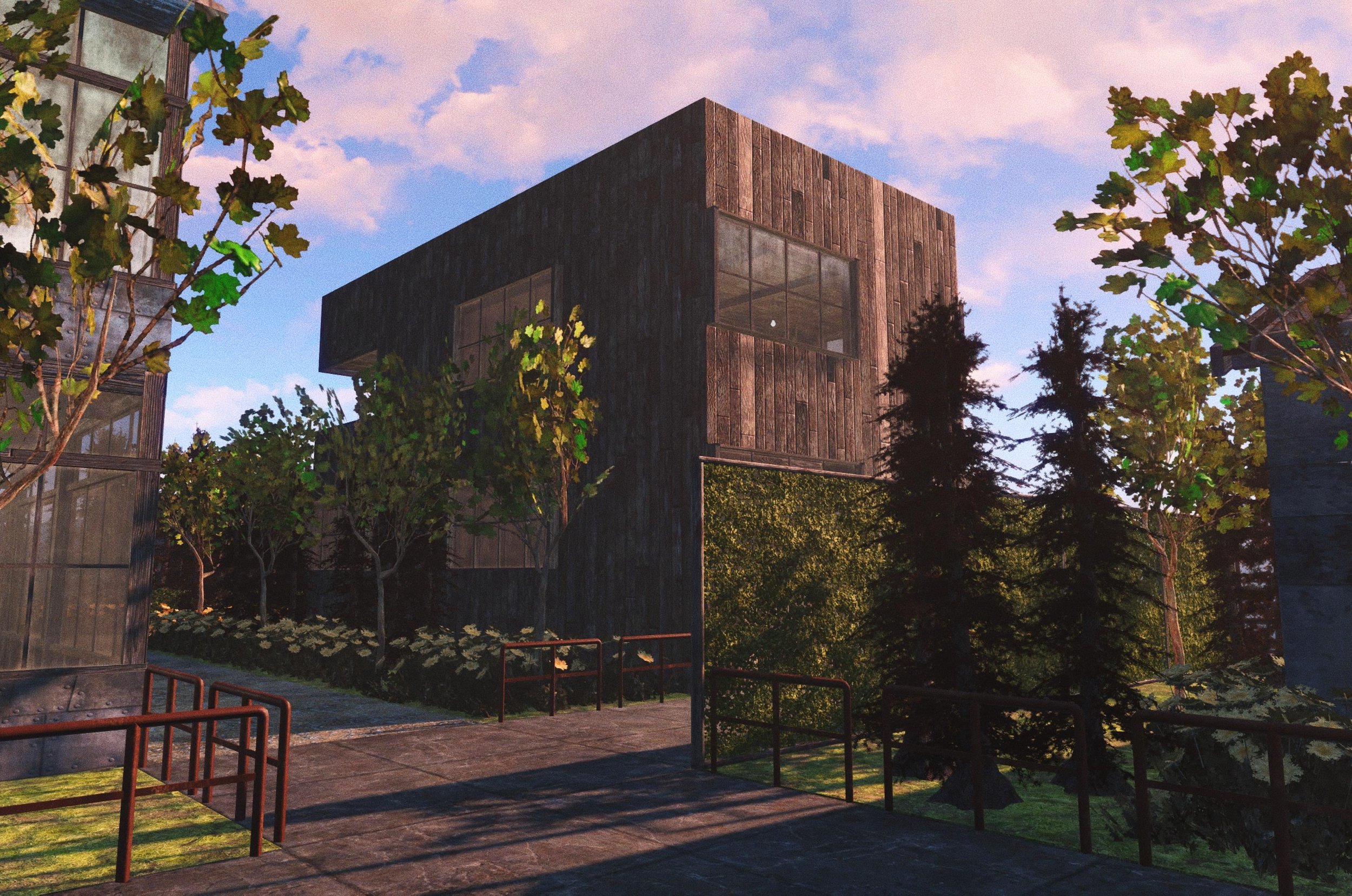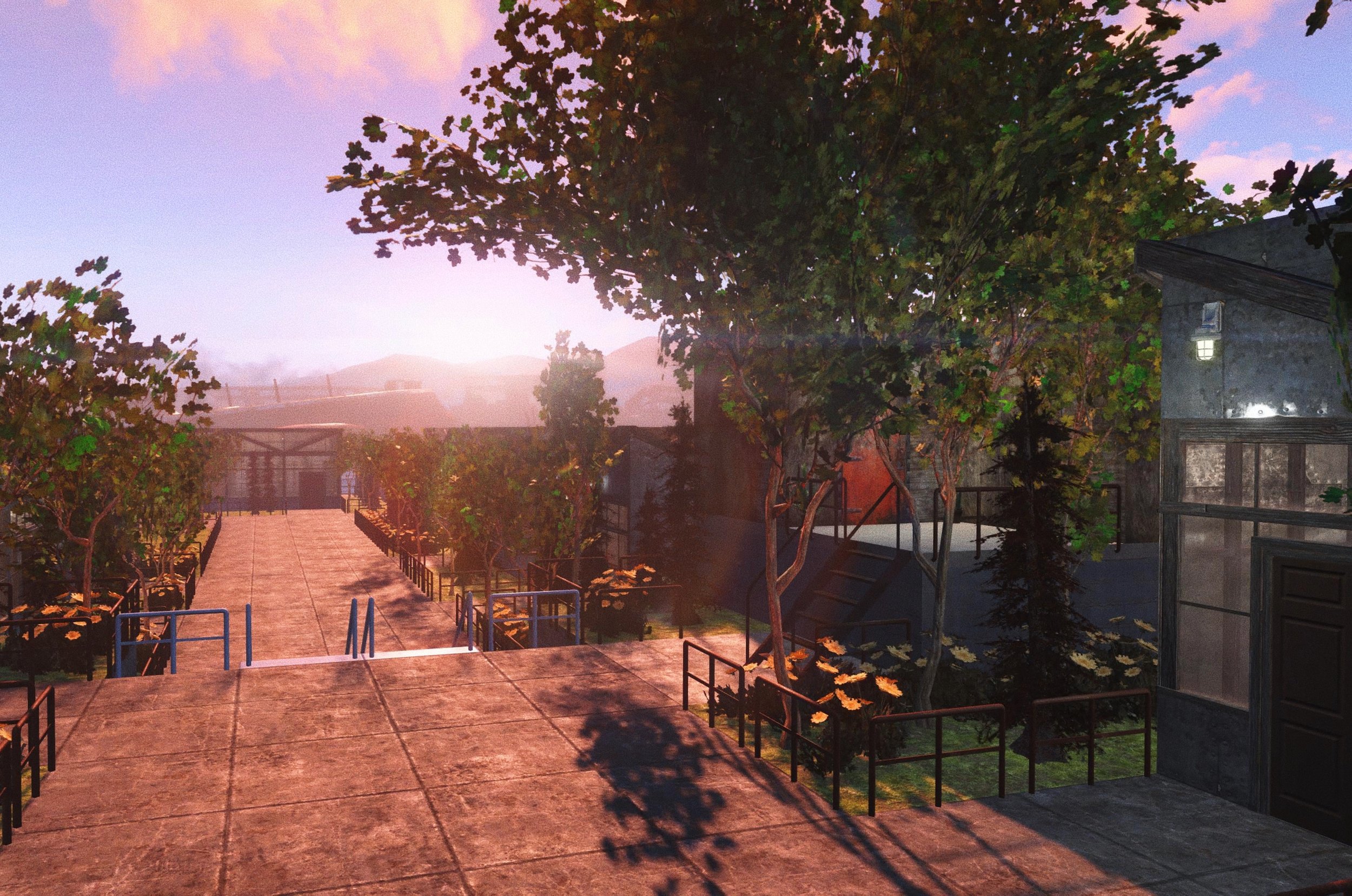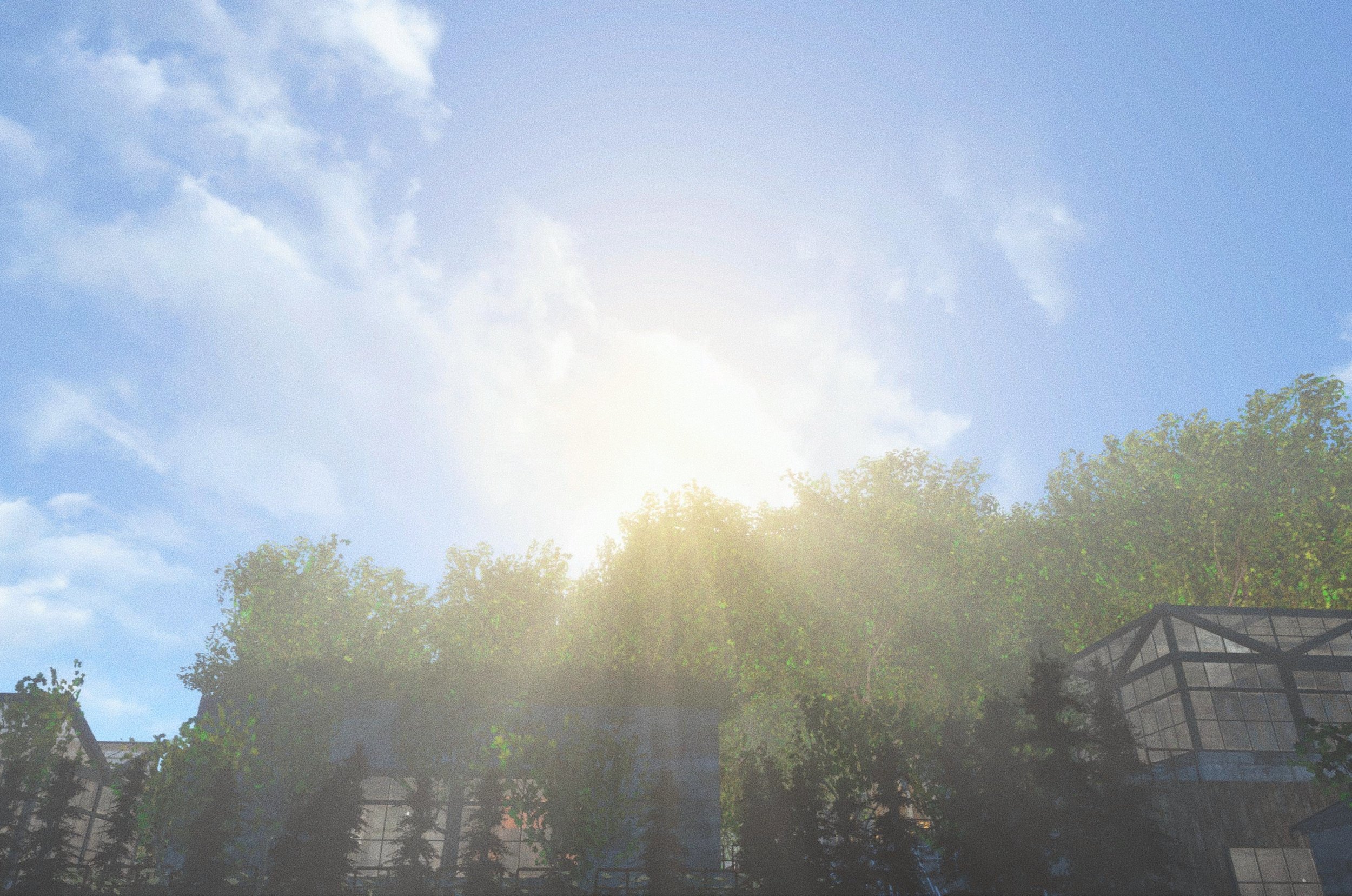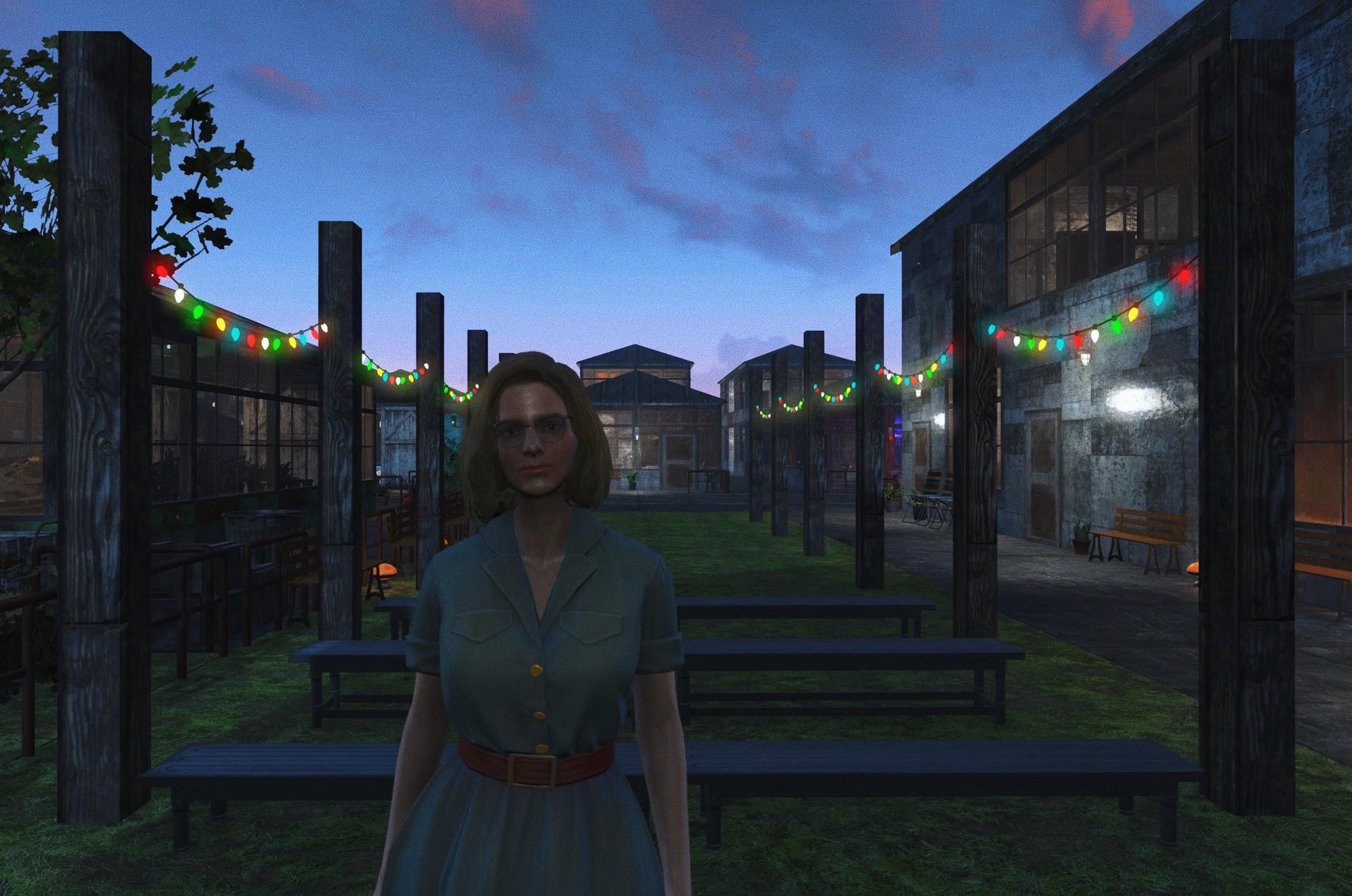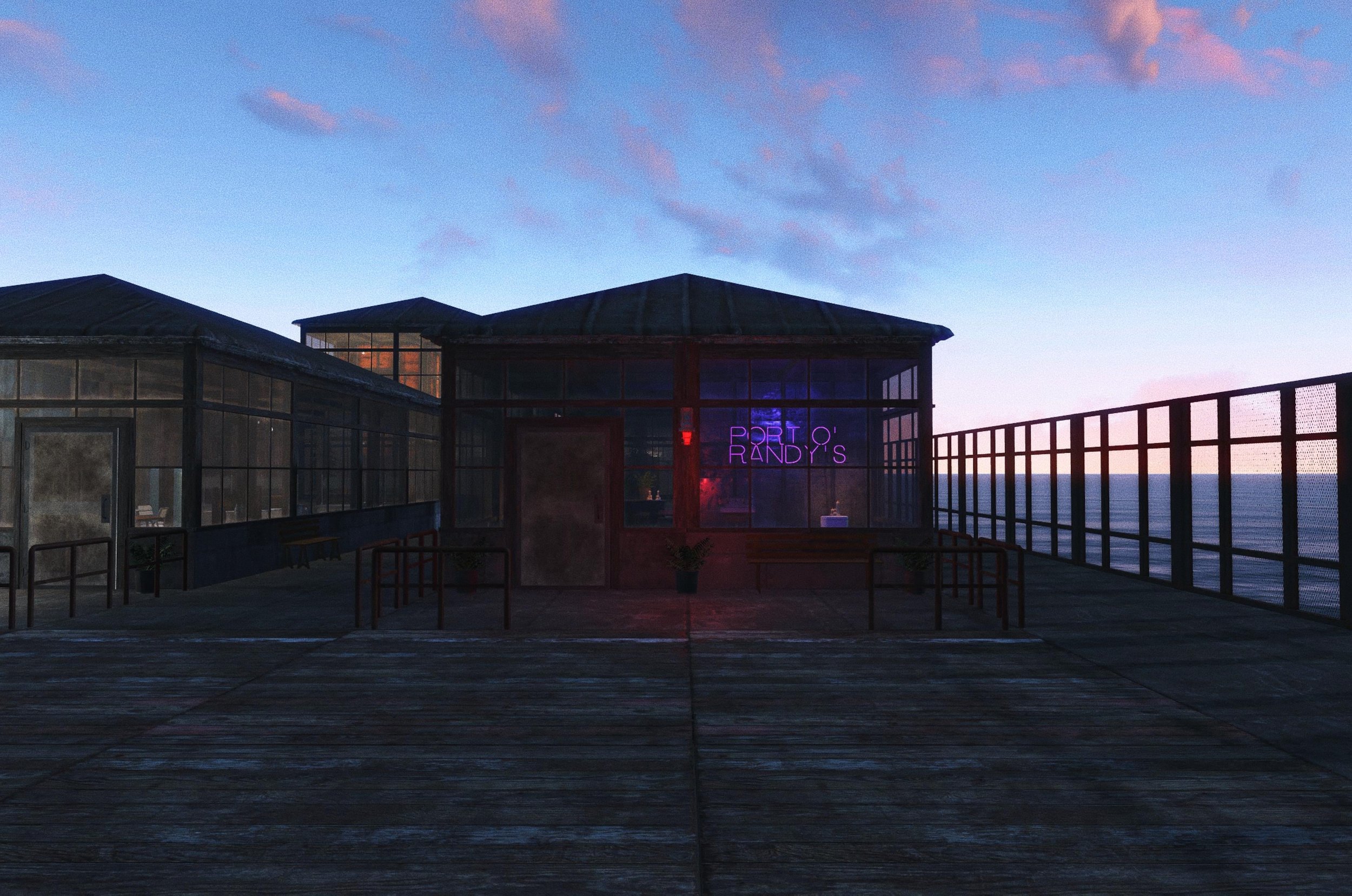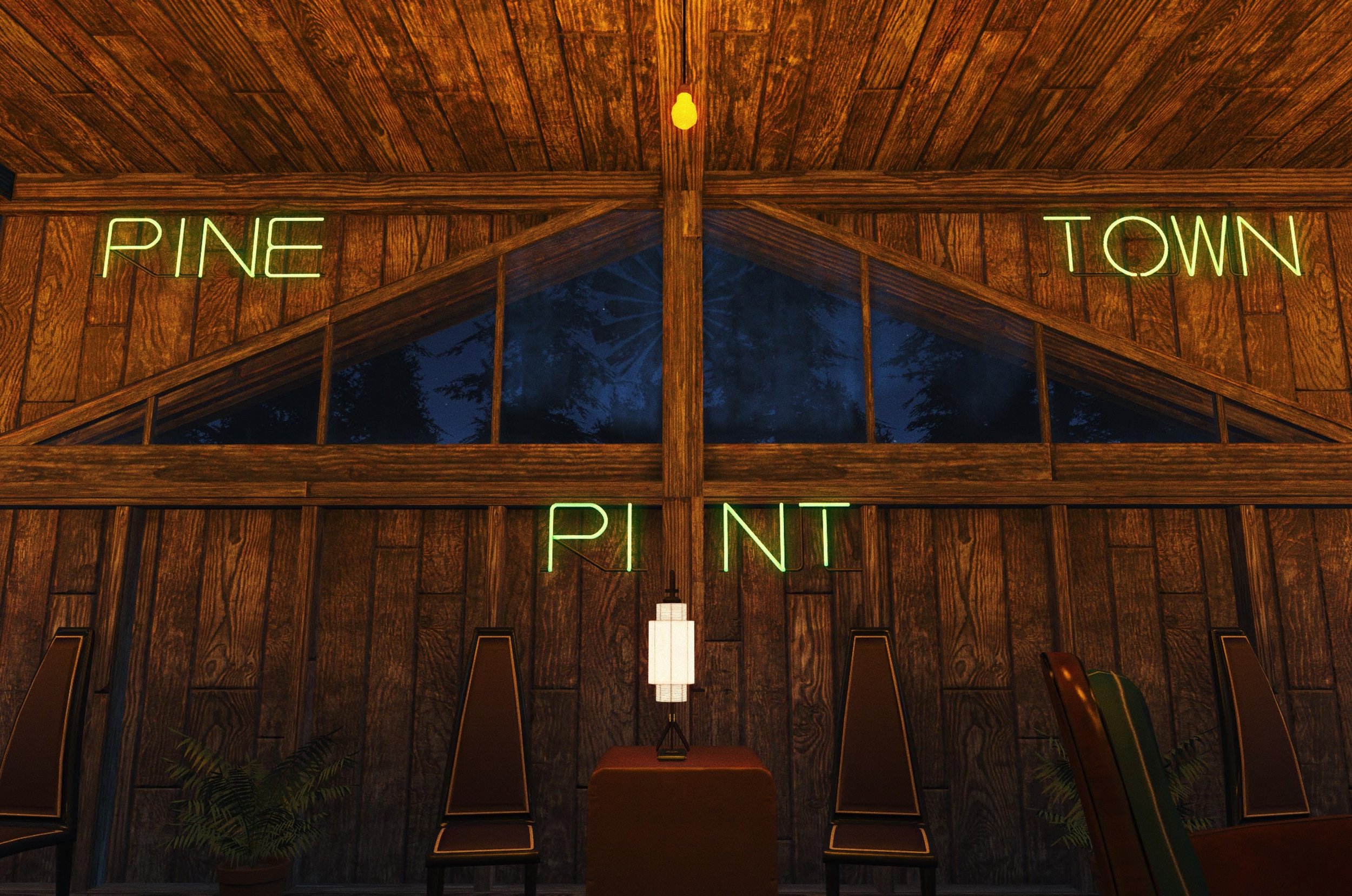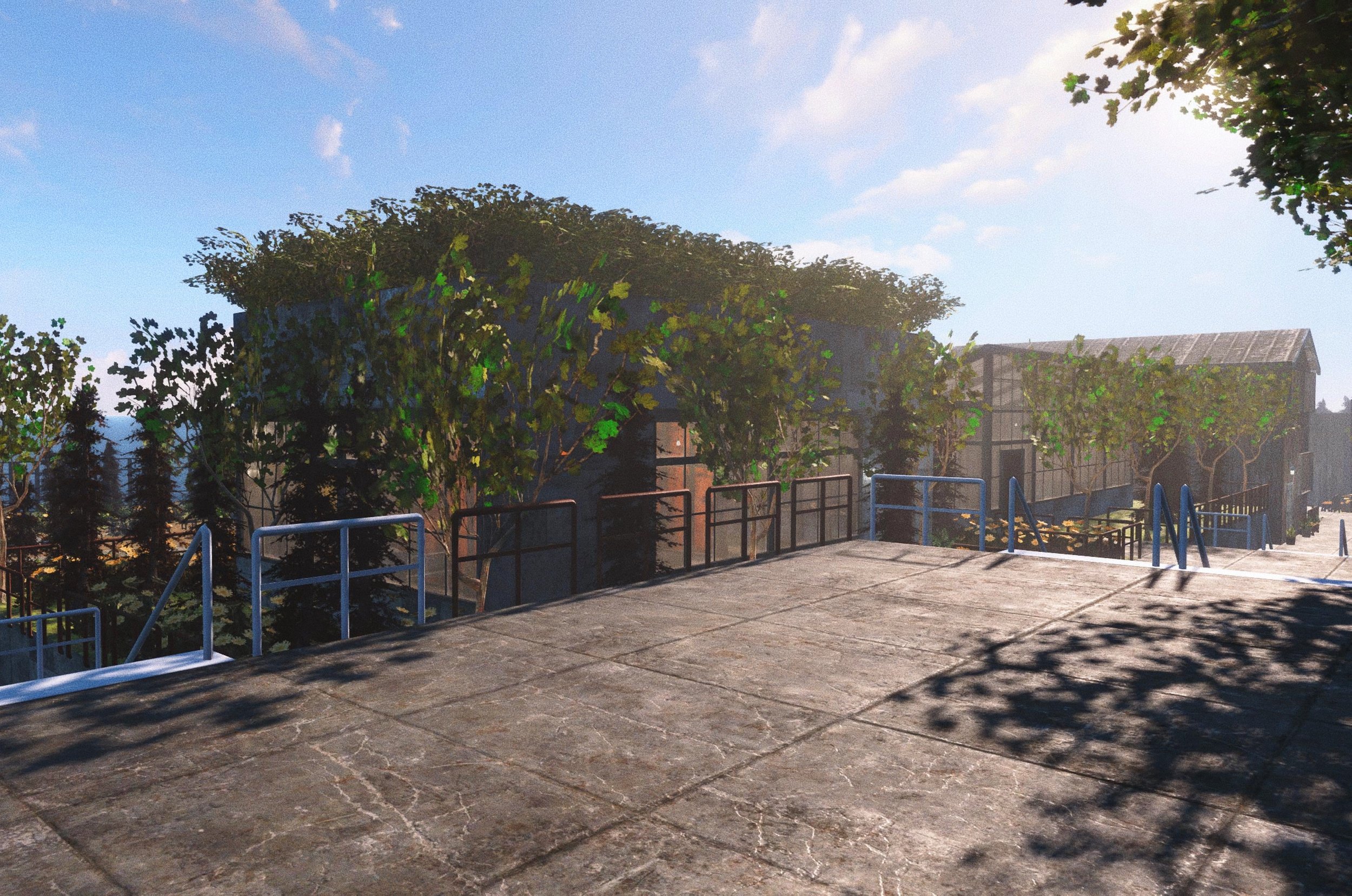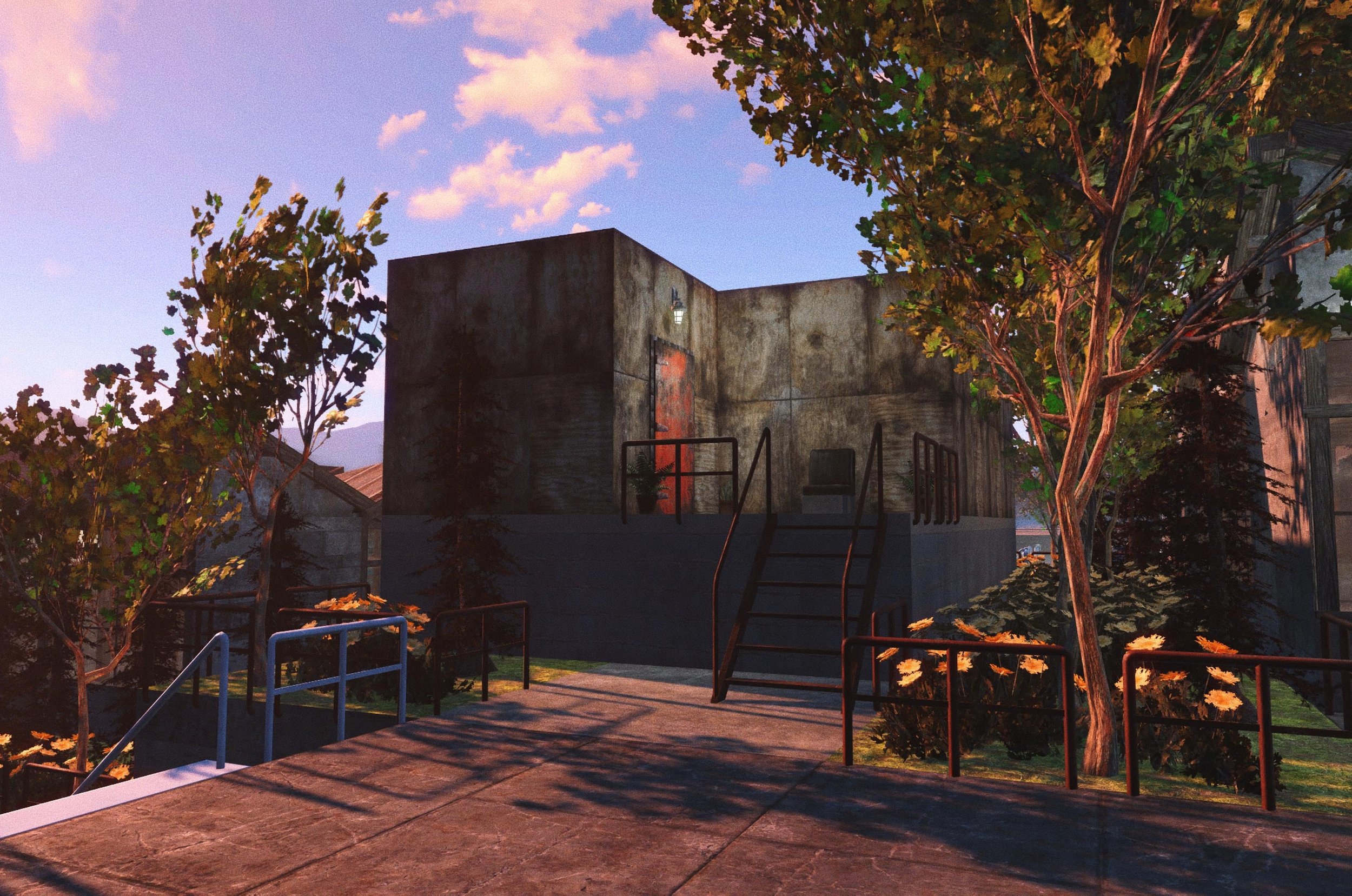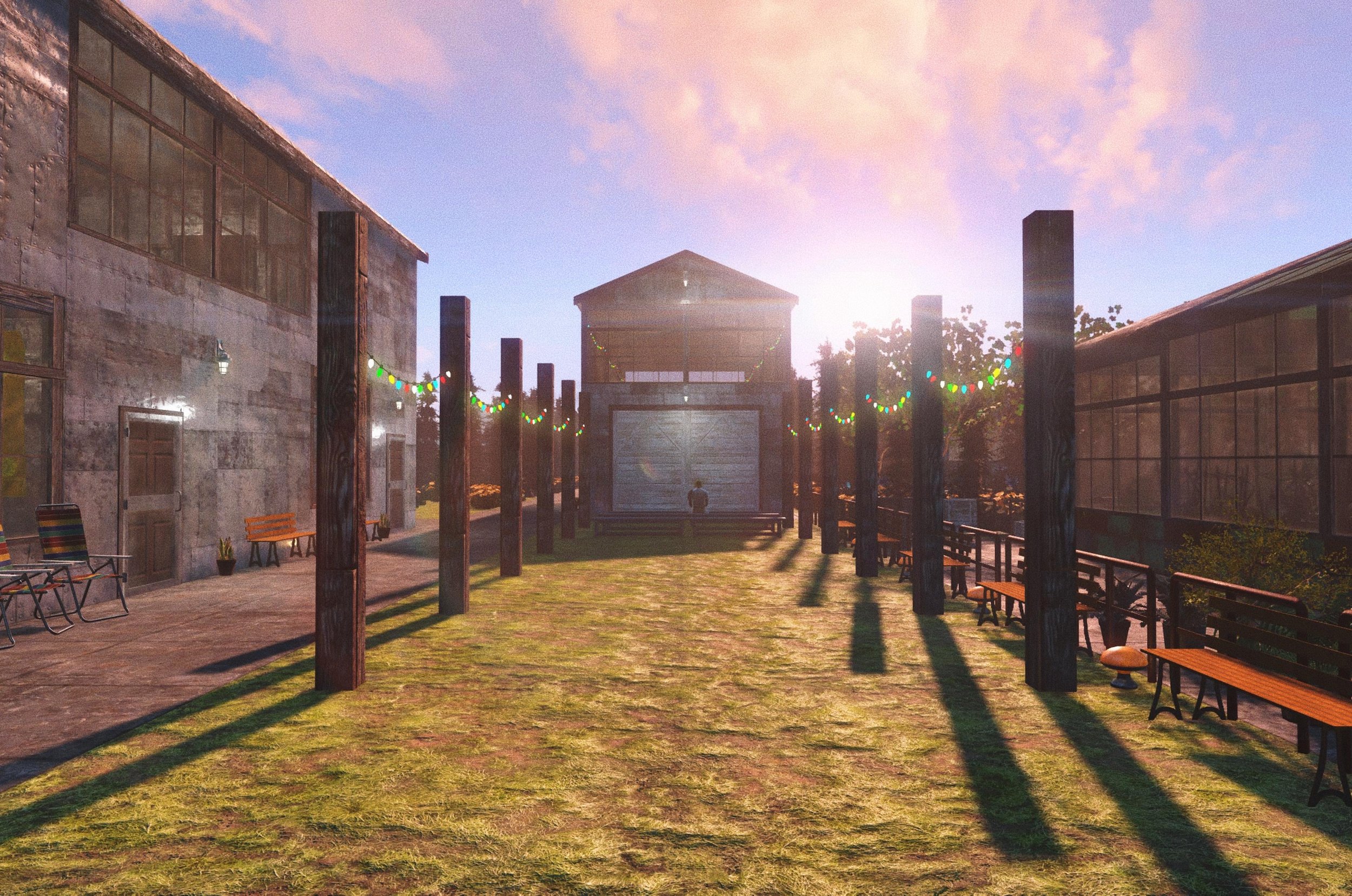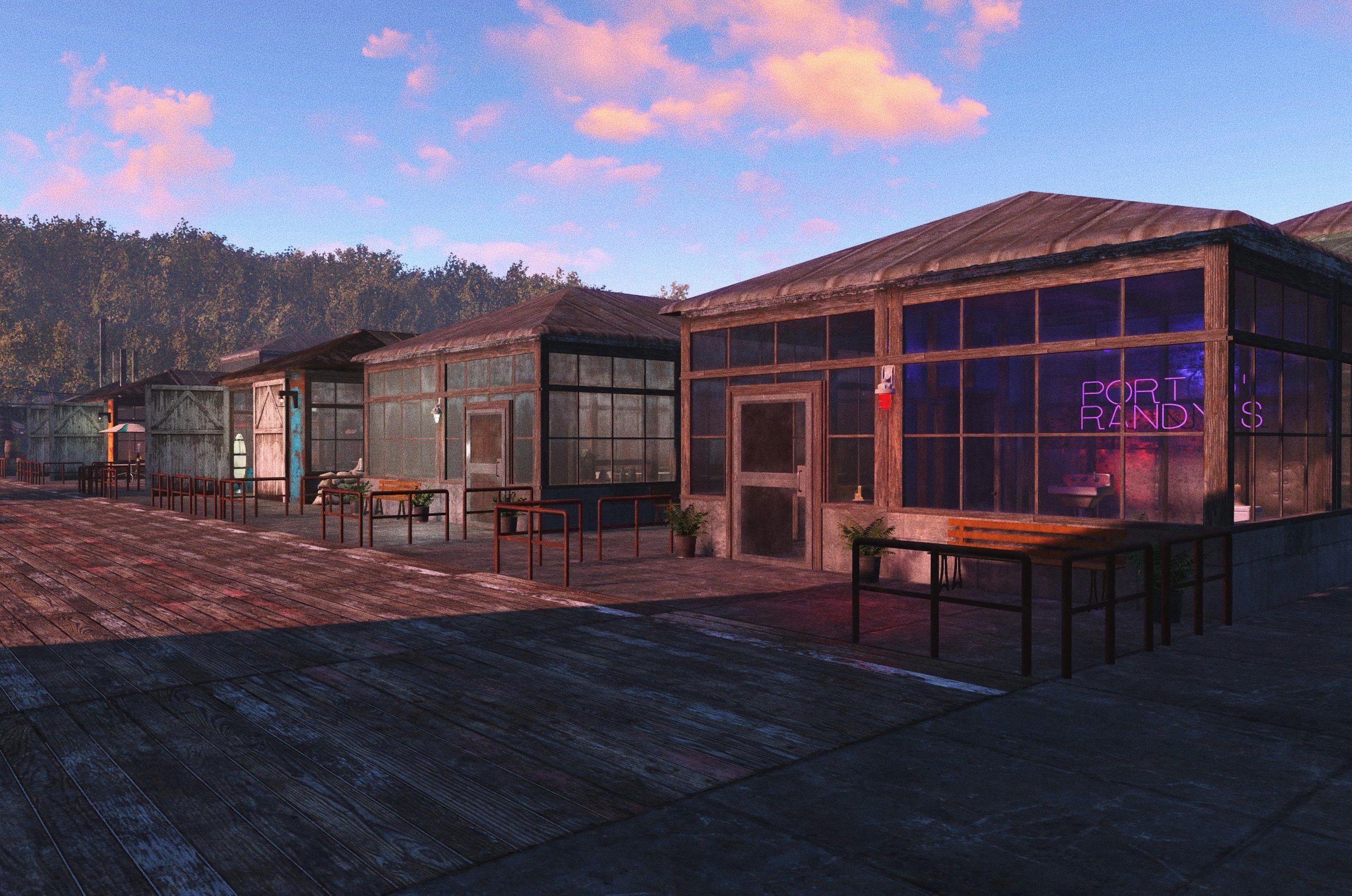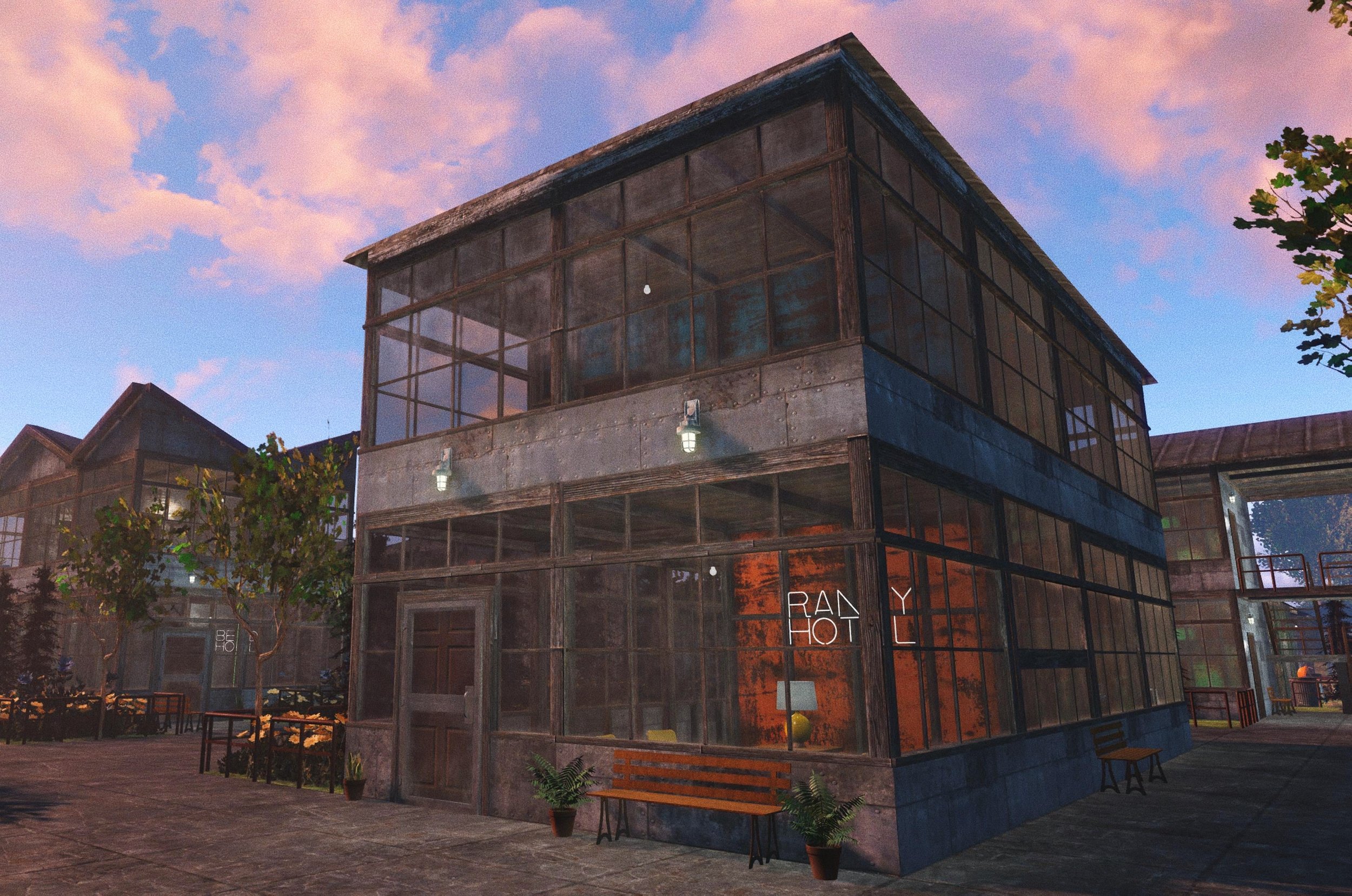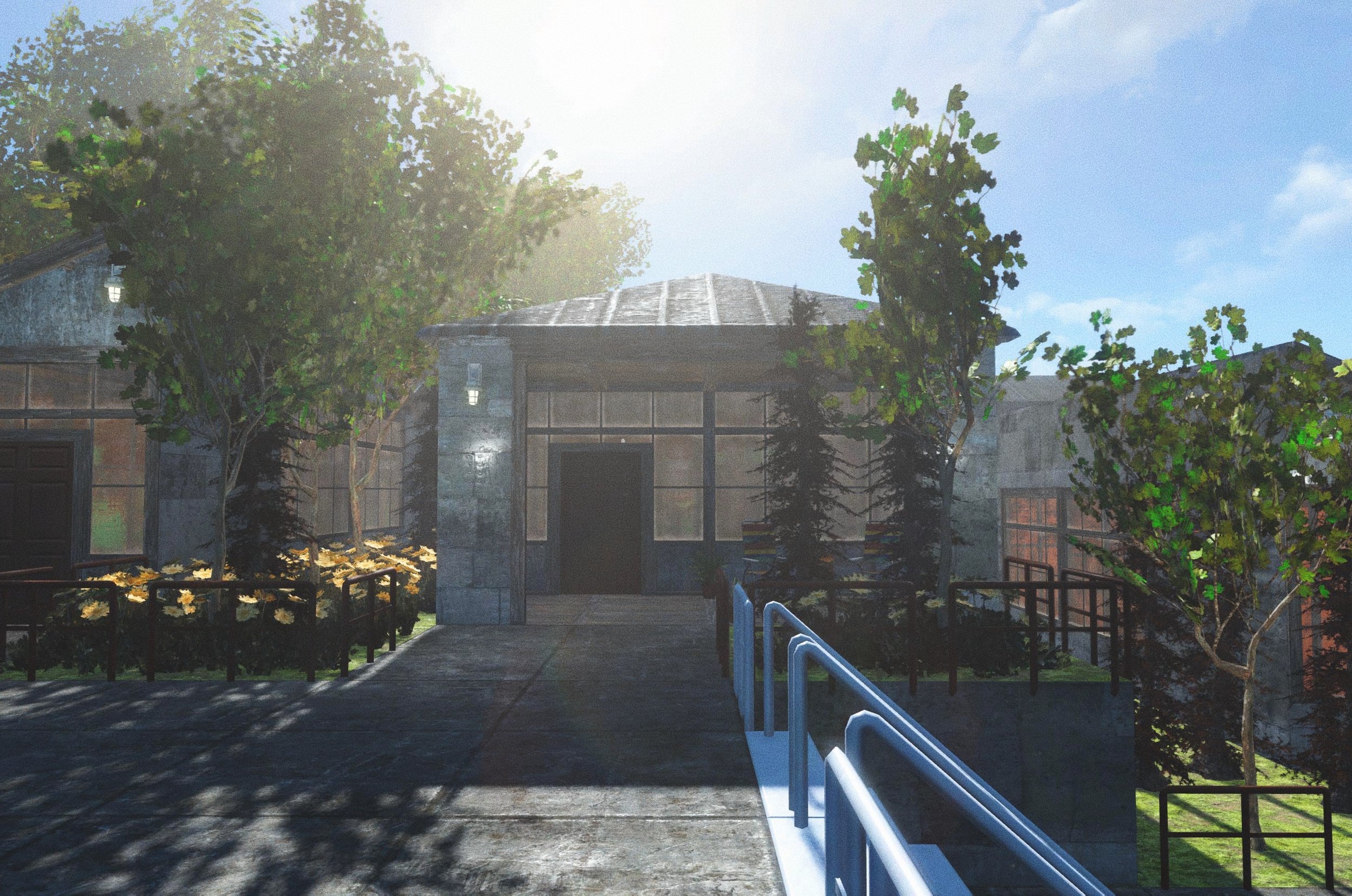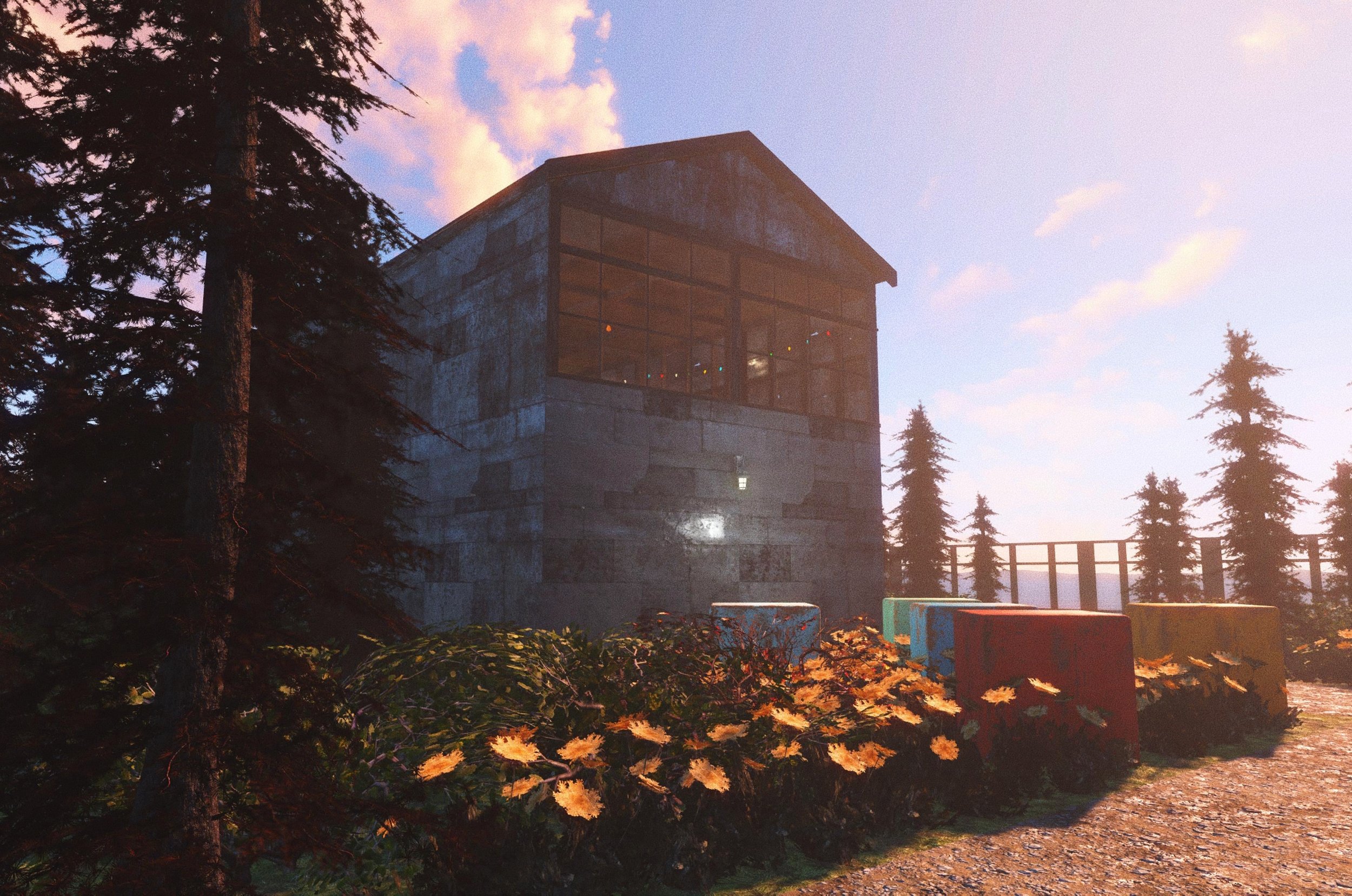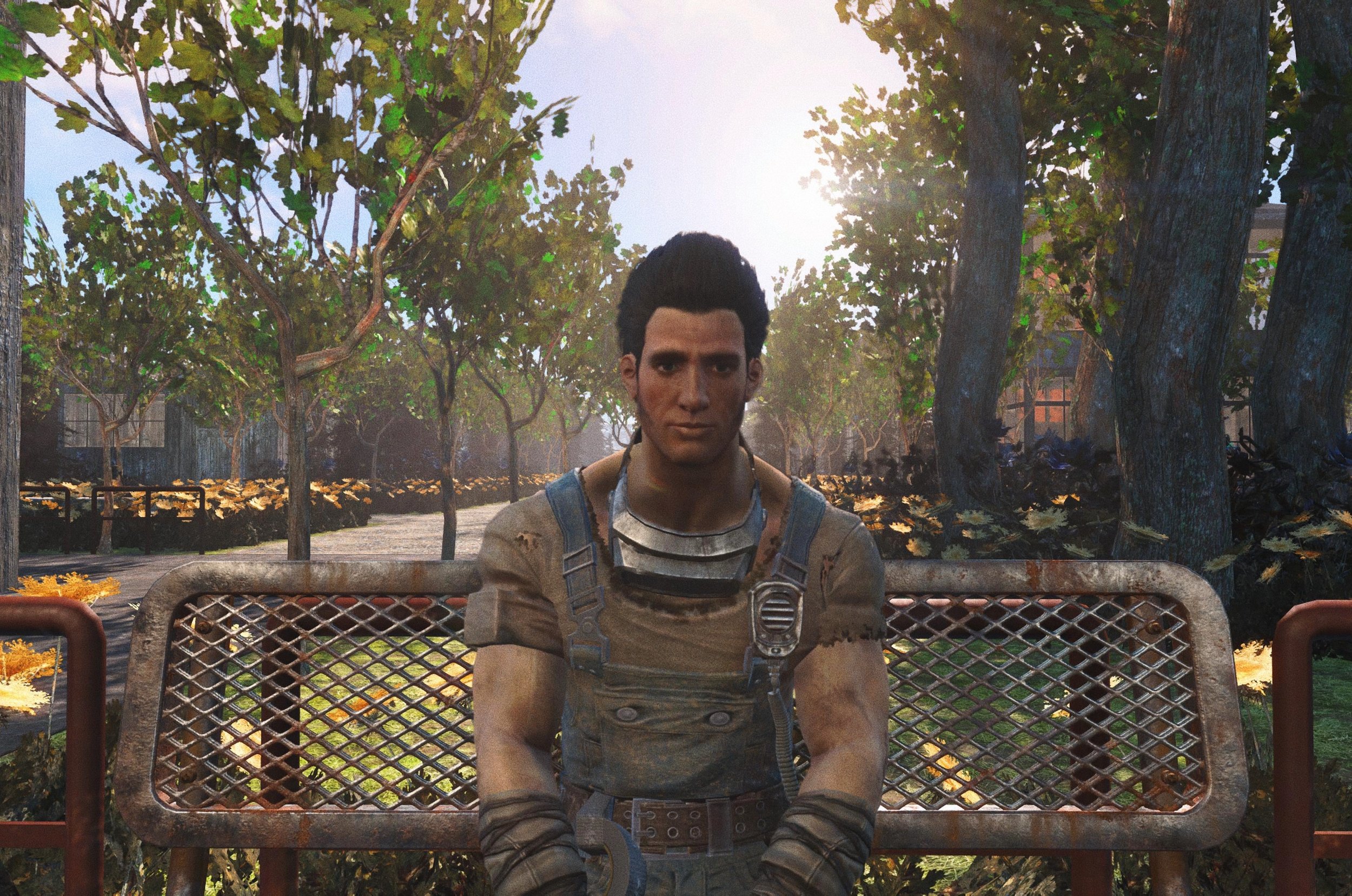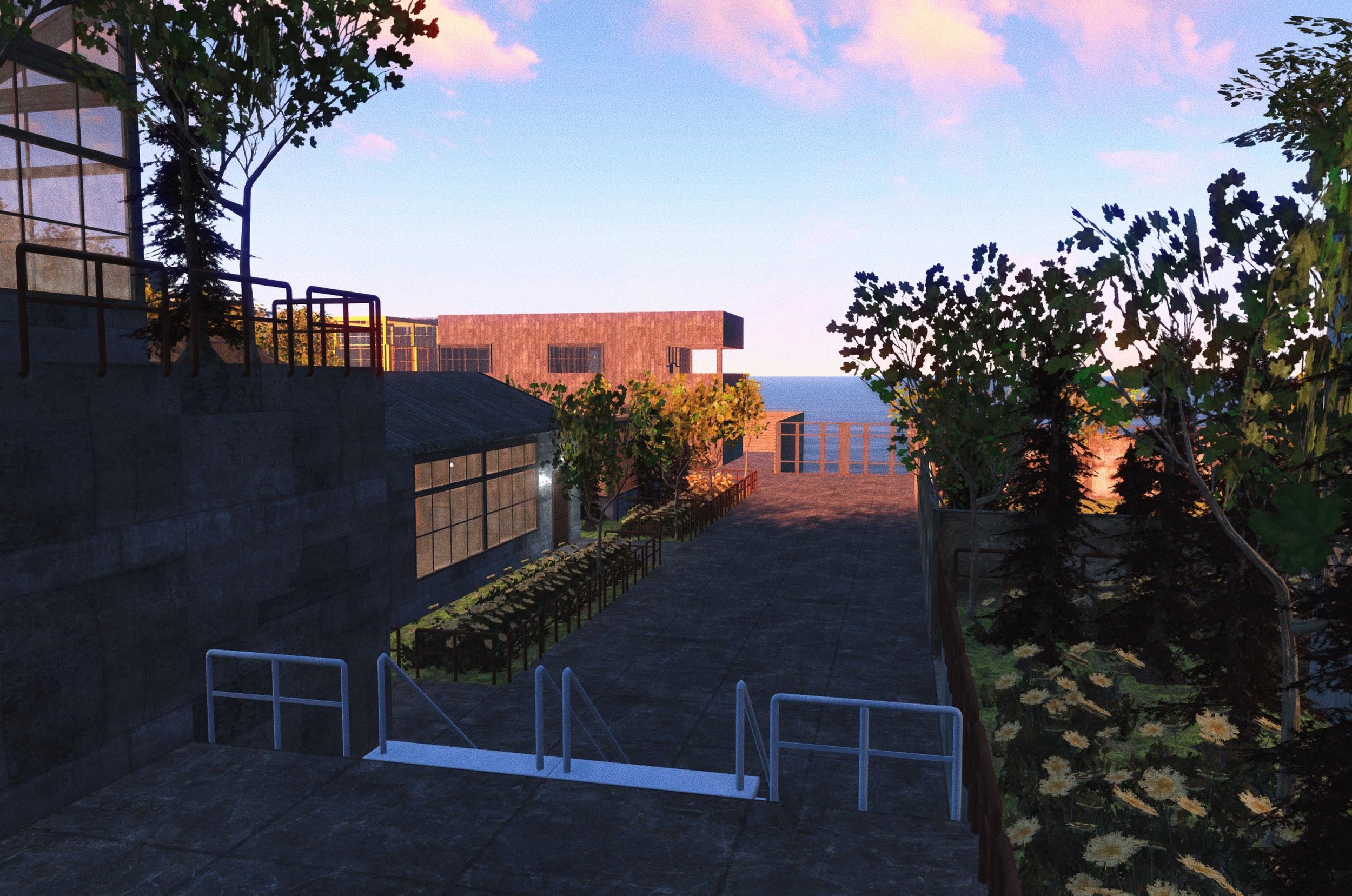Looking west on Randy Avenue. In the foreground is Bend Head (left); in the background, Randy (right).
Spectacle ISLAND: UNITED
Part 4 of the Spectacle Island series. Includes excerpts from past articles by the Spectacle Islander.
LAST — Spectacle Island: growing pains
NEXT — Spectacle Island: no limits
Spectacle Island is a large, populated island in the Commonwealth. Historically, the island has been home to two settlements: Spectacle and Randy. With Spectacle city limits practically built-out, city leaders approved a measure which effectively added the entirety of the island to its jurisdiction. The decision did not come without controversy from residents of both settlements. Spectacle residents were concerned about incorporating the Randy region into the city considering the decrepit and lawless state it was in, while Randy residents faced a complete transformation of their community and way of life. In order to mitigate this, the city committed to revitalization efforts in and around Randy, adding housing, parks, and streetscaping; repurposing the old industrial site into a vibrant commercial district; and preserving the historic town center. Meanwhile, Coastal Forest, a new residential neighborhood with more than thirty homes, was built to the north. As a part of the political restructuring of the island, the city was officially renamed to the City of Spectacle Island to signify unity.
A BRIEF HISTORY
United in Randy
As Spectacle experienced a surge in construction and population unprecedented in the post-war world, leaders of the thriving city focused on how to expand. Since the city limits of Spectacle were practically built-out, and with the remaining portions of the island falling outside of its jurisdiction, leaders shifted their efforts towards a political restructuring of the island to annex and incorporate the Settlement of Randy. Once incorporated, the city would send in security personnel to restore order to the old industrial site and other illegally occupied buildings. Next, select buildings and land would be cleared and prepared for development. Finally, new buildings, parks, and roads would be constructed according to the plan. This involved several months of planning between city leaders, security, and staff. The Minutemen and Institute were also involved during the planning process; the former assisted with the eventual liberation of the old industrial site, while the latter declined to contribute manpower to the raid but was heavily involved in the environmental planning and construction stages later on.
The character areas of Sandy and Sunrise, as well as the Coastal Forest and Seashore Preservation and Island Forest Preservation, were to be cleared to make way for Coastal Forest, a new residential neighborhood consisting of nearly three dozen single-family homes. During the public hearings for the proposed plan, opponents of the plan lamented the cultural, environmental, and social ramifications the plan would have on the island. Opponents argued that, while the city would not permanently displace any legal residents, they would be forcibly removed from their home and way of life, temporarily live in a hotel for weeks, and return to a community unrecognizable from the one they left. Ultimately, opponents argued the plans would lead to a loss of culture, history, and nature–including the destruction of what was supposed to be preserved land. This led the city to negotiate with the groups. The city refused to budge on the land use element of the plan, claiming it was essentially a ‘done deal’ that involved months of infrastructure planning and property acquisition. Additionally, inspections of the existing structures carried out by city staff concluded that most, if not all, of the structures in Sandy and Sunrise were structurally unsound or damaged irreparably from neglect and weather. As a result of the negotiations, the city agreed to limit the amount of development and sprawl in Randy in favor of more landscaped parks; preserve the historic old town center; repurpose the old industrial site; preserve as many existing trees as possible; and commit to the future construction of an industrial complex and port facility just west of the neighborhood, all of which the city insists will boost economic, natural, and social assets for Randy and Coastal Forest as well as the whole island.
The old industrial site was successfully liberated with little to no resistance from the group occupying the site. The group, who refer to themselves as the “Scrappers,” are believed to be affiliated with the Rust Devils. Spectacle Security, along with assistance from the Minutemen, surrounded the site, named “Camp Scrappy” by the group, in the early hours of the morning, successfully removing around forty people from the site. The leaders of the group were criminally charged, arrested, and tried on the island, while the rest of the group was immediately escorted to the Commonwealth by boat. This move was met with controversy from political activist groups in Spectacle. After the site was cleared, crews moved in to begin cleanup and restoration efforts. The group had accumulated large amounts of scrap from around the Commonwealth and stored it throughout the site. The group also constructed large structures made from scrapped metal which were housed inside the warehouse buildings. It is likely the group used these structures as shrines for spiritual purposes. Some of these structures were preserved and are currently on display at the Port Sculptures Garden and in the Warehouse. Elsewhere in the Randy region, dozens of houses were to be evacuated and razed.
The Randy Renaissance
Residents of affected buildings were temporarily housed in hotels while the city committed to the massive revitalization effort in and around Randy, adding dozens of housing units in the form of apartment buildings in which the displaced residents were moved into upon completion. The effort additionally created four brand new parks: Bend Park, Port Park, Randy Park, and Sunrise Park, as well as two community gardens; a dozen new buildings; and new roads with landscaping and streetscaping. The community was designed (or redesigned) with a heavy emphasis on nature and art. The city worked with the Institute to plant thousands of flowers, plants, and trees–mostly pine. In fact, the reinvented neighborhood is now lovingly being referred to as “pine town” among new residents and visitors.
Randy has emerged as a destination in its own right. The neighborhood stands on its own in terms of architecture, entertainment, historic preservation, and nature. Fourteen buildings in and around the old town center were preserved, now hosting a collection of bars, events, restaurants, and shops. The four parks on each side of the neighborhood, with beautifully landscaped yards and streetscaping in between, create a seamless transition between town and nature. The design of the new buildings, based on the original commercial buildings in the historic old town center, is colloquially referred to as the “Randy style.” Buildings of this style are constructed with recycled metal and feature low-lying roofs and large windows.
Coastal Forest, though a separate neighborhood, largely feels like an extension of Randy considering the similar architecture, landscaping, and overall vibe. The neighborhood, constructed atop of previously preserved land, features nearly three dozen houses packed tightly along Coastal Forest Avenue, hidden under the spared tall trees of the forest. The houses largely resemble the “Randy style” and generally follow the same floor plan with varying colors, roof styles, and windows. This has been referred to as the “Coastal Forest style.” One final style to emerge during the transformation is the “Camp style,” featuring reclaimed wood harvested from trees removed from the forests.
WHAT’S NEW
Coastal Forest
Set inside what was formerly known as the Coastal Forest and Seashore Preservation and Island Forest Preservation, the entirely-residential Coastal Forest neighborhood arguably serves as an architectural and cultural extension of its neighbor to the south, Randy. The neighborhood, constructed atop of a largely still intact forest, features nearly three dozen houses packed tightly along Coastal Forest Avenue. The houses, constructed with recycled metal, generally follow the same floor plan with varying colors, roof styles, and windows. The neighborhood reaches east to west across the entire island.
Points of interest: 5 N Forest Ave, 7 W Coastal Forest Ave
Randy
Randy has emerged as a destination in its own right. The neighborhood stands on its own in terms of architecture, entertainment, historic preservation, and nature. The neighborhood was redesigned with a heavy emphasis on nature and art. Four parks sit on each side of the neighborhood, with beautifully landscaped yards and streetscaping in between, creating a seamless transition between town and nature. Thousands of flowers, plants, and trees were planted during the revitalization process. Most of the trees planted were pines, a species not previously found on the island, which has led to a new nickname for the neighborhood from newcomers: “pine town.”
Points of interest: Town Hall, Randy Park
Bend
Old Town
Warehouse District
West Avenue
Nearly a dozen buildings were preserved to form Old Town, the historic town center which now hosts a collection of bars, events, parks, restaurants, and shops. Adjacent to the east is Bend, a beautiful gateway into the neighborhood built up around Bend Park. To the west is the Warehouse District, a bustling commercial and nightlife pocket born from the repurposing of the old industrial site. West Avenue is a quiet residential street home to a large chunk of the neighborhood’s residences.
A travel guide
Where to…
EAT—Have breakfast and mimosas at Sandy Sammy in Old Town; for lunch, eat and shop fresh oysters at the Oyster House, an original staple of the community; and for dinner, enjoy an upscale dining experience at the Fish Market, conveniently located near a handful of nightlife options.
DRINK—After dinner, have a nightcap at Port O’Randy’s in Old Town, open later than any other in the neighborhood; have a beer under the windmill behind Pine Town Pint located in Bend Park; or enjoy an elegant cocktail at Port y Pine in the Warehouse District.
PLAY—Catch a live show at the Warehouse, an old warehouse building repurposed into an event venue in the Warehouse District, a bustling commercial and nightlife pocket nestled between Old Town and two parks; speaking of parks, explore any of the neighborhood’s four breathtaking parks: admire the light from the sunrise bleeding between the pines trees at Bend Park; pick your own fruit and vegetables at Sunrise Park; relax at any of the tucked-away concrete benches scattered throughout Randy Park; or take a stroll through the carrot flower field lined with glowing orange lights and metal sculptures at Port Park.
STAY—All lodging options are conveniently located near a park. Stay at Bend Hotel, located in beautiful Bend Park; Randy Hotel, featuring a sweeping view of Old Town; Sunrise Hotel, constructed using reclaimed materials from the demolished Sunrise Mill building; Port Park Hotel, a beautiful, “Camp-style” building constructed with recycled trees featuring an outdoor balcony facing Port Park; or the Warehouse Hotel, a beautiful collection of hotel rooms repurposed from an old industrial warehouse.
NEXT—City leaders are continuing the political restructuring of the island, now officially the City of Spectacle Island, into five wards: East, Main, North, South, and West. The wards will provide direct council representation for neighborhoods and their residents. Additionally, the city is now shifting their focus to expanding the island once again through land reclamation methods. City leaders are proposing the Spectacle Island Beltway, a ring road which would serve as a bypass around the island with limited points of accessibility. The land between this road and existing neighborhoods will be filled in and developed. Finally, the city aims to create Special Purpose Districts including agricultural, border, and industrial facilities on the edges of the island. In other news, the city has a handful of infill and revamp projects, including expanding and improving Capital Square; erecting the island’s new tallest building, the Island Tower; and expanding the Barge Institute of Technology campus, among others.
